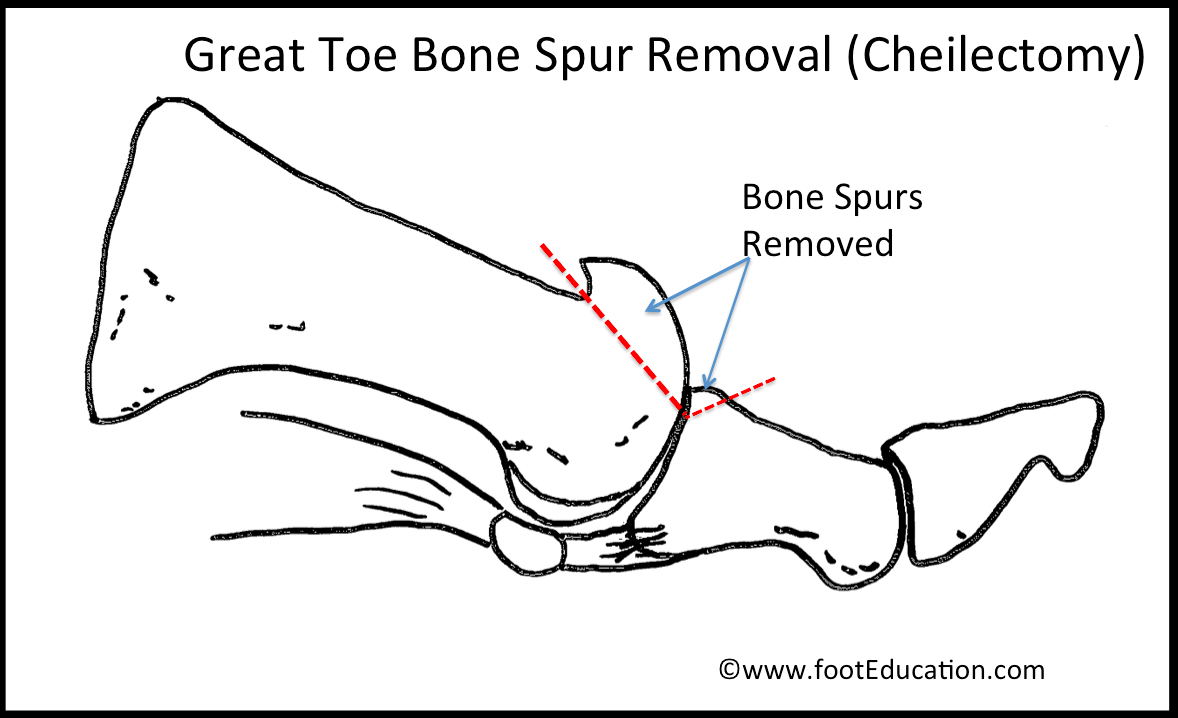Bone Spur Treatment Hand: Causes, Types, and Effective Management Strategies
What are bone spurs in hands. How do they form. What are the different types of hand bone spurs. How are bone spurs diagnosed. What treatment options are available for hand bone spurs.
Understanding Bone Spurs in Hands: Formation and Causes
Bone spurs, medically known as osteophytes, are bony protrusions that develop within joints over an extended period. These outgrowths can occur in various parts of the body, including the hands. But what exactly causes these bony formations?
The primary culprits behind bone spurs in hands are:
- Osteoarthritis
- Joint injuries
- Repetitive stress or overuse
Osteoarthritis, a degenerative joint disease, is the most common cause of hand bone spurs. As the protective cartilage in finger joints wears away, the body attempts to repair the damage by producing additional bone tissue. This natural repair process, unfortunately, results in the formation of bone spurs.
While bone spurs can affect individuals of any age, they are most prevalent in people over 60. However, younger individuals engaged in repetitive hand movements or those with a history of hand injuries may also develop these bony outgrowths.

Types of Hand Bone Spurs: Identifying the Variants
Hand bone spurs manifest in several forms, each affecting different parts of the hand and fingers. Understanding these variants is crucial for proper diagnosis and treatment. Let’s explore the main types:
Bouchard’s Nodes
Bouchard’s nodes are bony enlargements that occur at the proximal interphalangeal (PIP) joints, which are the middle joints of the fingers. These nodes can cause:
- Swelling
- Stiffness
- Limited range of motion
- Difficulty performing everyday tasks
Interestingly, Bouchard’s nodes have a genetic component, with individuals having a family history of these nodes being more susceptible to developing them.
Heberden’s Nodes
Heberden’s nodes are similar to Bouchard’s nodes but occur at the distal interphalangeal (DIP) joints, which are the joints closest to the fingertips. These nodes can cause:
- Pain (in some cases)
- Swelling
- Stiffness
- Reduced finger mobility
Like Bouchard’s nodes, Heberden’s nodes also have a genetic predisposition. Both types of nodes are more common in women and tend to affect the dominant hand more frequently.
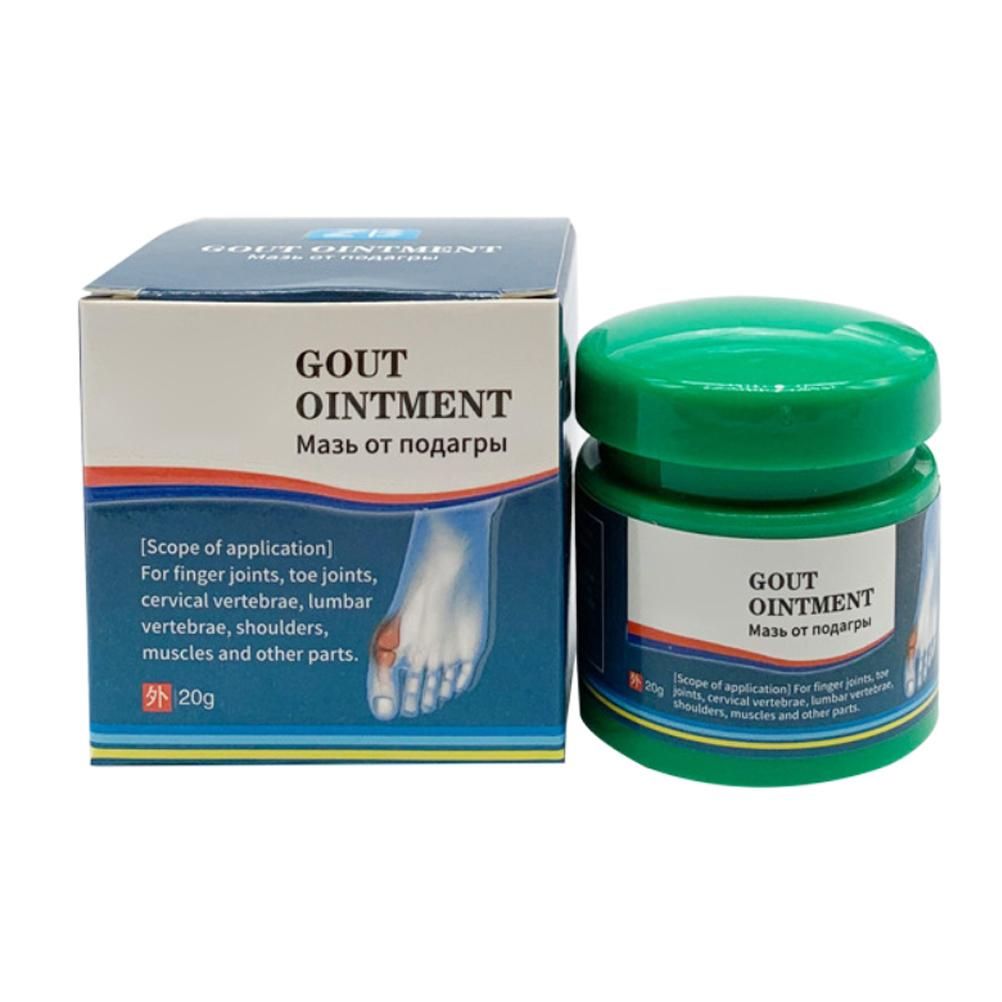
Carpal Boss
A carpal boss, also known as bossing, is a unique type of bone spur that forms on the back of the hand. It affects the carpometacarpal joint of the index and middle fingers, where these fingers’ metacarpal bones join the trapezoid and capitate bones of the wrist.
Unlike other bone spurs, the exact cause of a carpal boss remains unclear. However, it’s often associated with:
- Traumatic hand injuries
- Repetitive hand use
Carpal bosses are often asymptomatic, but in some cases, they can cause pain and limit finger mobility.
Diagnosing Hand Bone Spurs: Methods and Considerations
Accurate diagnosis of hand bone spurs is crucial for effective treatment. How do medical professionals diagnose these bony outgrowths? The process typically involves:
- Physical examination
- Medical history review
- X-ray imaging
During the physical exam, a doctor will carefully inspect your hands and fingers, looking for signs of swelling, deformity, or restricted movement. They will also inquire about your symptoms and medical history, including any past hand injuries or conditions.

X-ray imaging plays a pivotal role in confirming the presence of bone spurs. These diagnostic images can clearly reveal any extra bone growth within the finger joints, helping to differentiate bone spurs from other hand conditions.
Treatment Options for Hand Bone Spurs: From Conservative to Surgical
The treatment approach for hand bone spurs depends on the severity of symptoms and the impact on daily activities. Can bone spurs in hands be effectively treated? Yes, several treatment options are available, ranging from conservative measures to surgical interventions.
Conservative Treatments
For mild to moderate cases, conservative treatments are often the first line of defense. These may include:
- Over-the-counter pain relievers
- Topical anti-inflammatory creams
- Ice or heat therapy
- Hand exercises and stretches
- Splinting or bracing
These methods aim to reduce pain, inflammation, and improve hand function without invasive procedures.
Corticosteroid Injections
For more severe pain or inflammation, corticosteroid injections may be recommended. These injections can provide significant relief by reducing inflammation in the affected joint.

Surgical Interventions
In cases where conservative treatments fail to provide adequate relief, surgical options may be considered. Surgical procedures for hand bone spurs may include:
- Bone spur removal
- Joint fusion
- Joint replacement
The choice of surgical procedure depends on the location and severity of the bone spur, as well as the overall health of the patient.
Preventing Hand Bone Spurs: Proactive Measures for Hand Health
While it’s not always possible to prevent bone spurs, certain measures can help reduce the risk of their formation or slow their progression. How can you protect your hands from developing bone spurs? Consider implementing these strategies:
- Maintain a healthy weight to reduce stress on your joints
- Practice good ergonomics when using your hands for work or hobbies
- Take regular breaks during repetitive hand activities
- Perform hand exercises to maintain flexibility and strength
- Use protective gear during activities that may stress your hands
By incorporating these preventive measures into your daily routine, you can promote overall hand health and potentially reduce the risk of developing bone spurs.
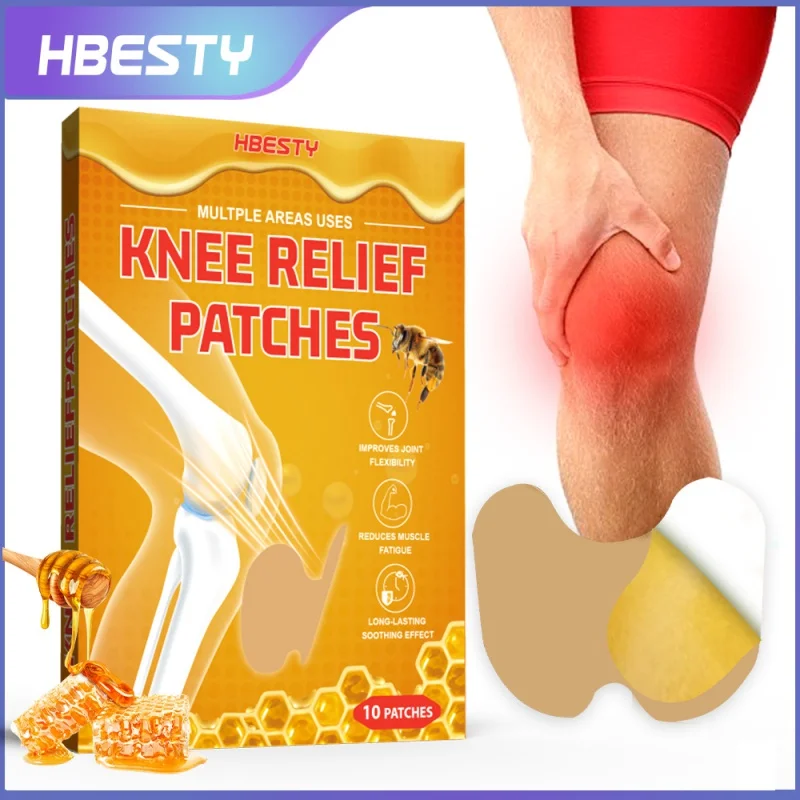
Living with Hand Bone Spurs: Adapting and Coping Strategies
For individuals living with hand bone spurs, adapting daily activities and implementing coping strategies can significantly improve quality of life. How can you manage your daily tasks with hand bone spurs? Consider these tips:
- Use ergonomic tools and devices designed for people with hand conditions
- Practice joint protection techniques to reduce stress on affected joints
- Incorporate rest periods into your daily routine
- Explore alternative methods for performing challenging tasks
- Consider occupational therapy for personalized strategies
Remember, living with hand bone spurs may require some lifestyle adjustments, but with the right approach, you can maintain an active and fulfilling life.
When to Seek Medical Attention: Recognizing Red Flags
While many cases of hand bone spurs can be managed with conservative treatments, certain symptoms warrant immediate medical attention. When should you consult a doctor about your hand bone spurs? Be alert for the following red flags:
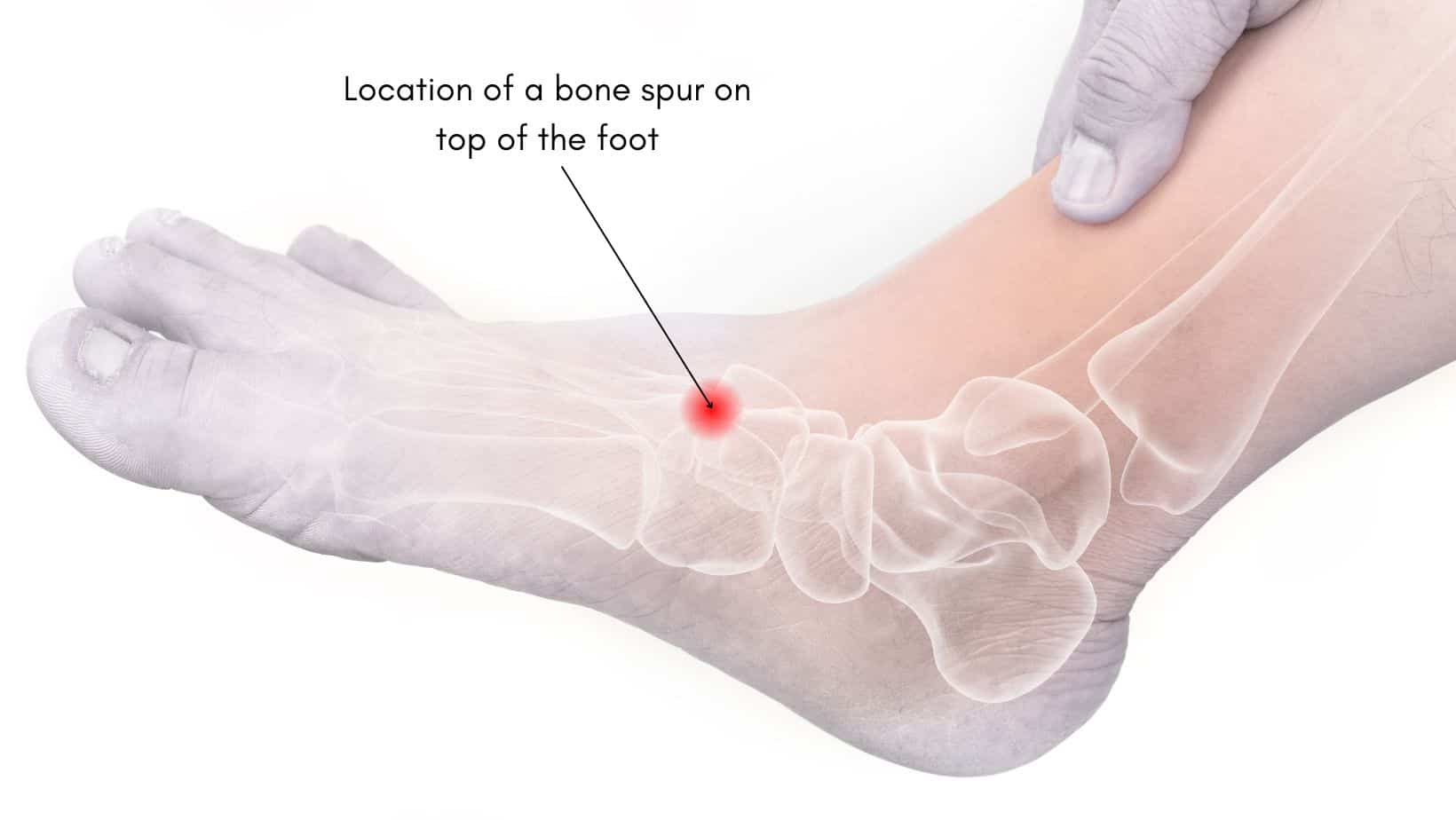
- Severe swelling or redness in the affected area
- Unusual warmth around the joint
- Drainage from the affected joint (particularly at the DIP joints)
- Fever or general feeling of illness
- Sudden or severe increase in pain
- Significant loss of hand function
These symptoms could indicate complications such as infection or the presence of a more serious condition like inflammatory arthritis. Prompt medical evaluation is crucial in these cases to prevent further complications and ensure appropriate treatment.
In conclusion, understanding hand bone spurs – their causes, types, and treatment options – is crucial for effective management. While these bony outgrowths can be challenging, with proper care and treatment, most individuals can maintain good hand function and quality of life. Remember, early intervention and a proactive approach to hand health can make a significant difference in managing this condition.
Causes of Bone Spurs in Hands and Treatment
Bone spurs, also called osteophytes, are outgrowths of bone that develop within joints over a long period of time. Bone spurs in the hand can develop as a result of injury to the finger joints or more commonly from osteoarthritis, where the protective cartilage covering the joint surfaces of the fingers breaks down and wears away over time. Bone spurs are most common in people over 60 years old, but they can occur in younger people too.
Without adequate cartilage, the bones of the finger joints become irritated and inflamed due to increased friction. As the body tries to repair the resulting joint damage, bone cells produce more bone growth in an attempt to provide more protection to the joint. This results in the formation of bone spurs that can change the appearance of the joint and limit mobility by restricting hand movement.
Leslie Lauren / Getty Images
Types of Hand Bone Spurs
Bouchard’s Nodes
Bouchard’s nodes are bony enlargements occurring at the proximal interphalangeal (PIP) joints, the middle joints of the fingers. These nodes may or may not be painful and can cause swelling and stiffness, limiting the range of motion of the fingers and interfering with a person’s ability to perform everyday tasks. People with a family history of Bouchard’s nodes are more likely to develop this type of bone spurs.
These nodes may or may not be painful and can cause swelling and stiffness, limiting the range of motion of the fingers and interfering with a person’s ability to perform everyday tasks. People with a family history of Bouchard’s nodes are more likely to develop this type of bone spurs.
Heberden’s Nodes
Heberden’s nodes are bony enlargements occurring at the distal interphalangeal (DIP) joints, the joints of the fingers closest to the fingertips below the fingernails. They are very similar to Bouchard’s nodes, and may or may not be painful. They can also cause swelling and stiffness, limiting the range of motion of the fingers that can interfere with a person’s ability to perform everyday tasks. There is also a genetic predisposition to the development of these nodes.
People with osteoarthritis have a decreased response of cartilage cells, called chondrocytes, to activate repair mechanisms when their joints are repetitively stressed. Both Bouchard’s nodes and Heberden’s nodes are common in hand osteoarthritis, and have been found to occur more commonly in women and in a person’s dominant hand.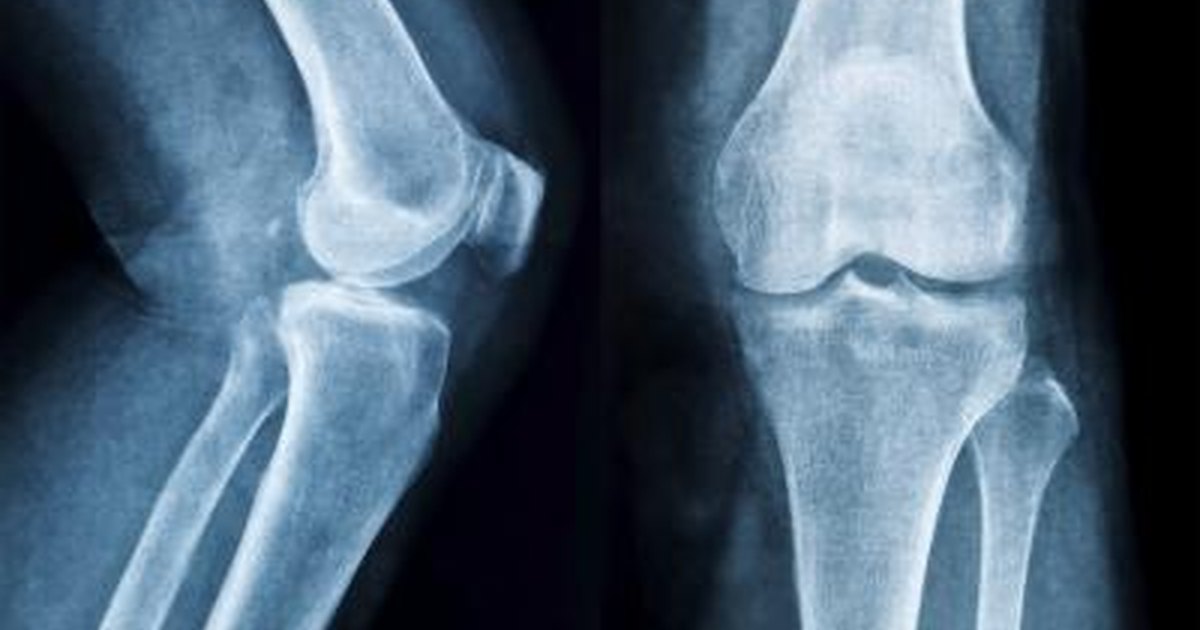
Carpal Boss
A carpal boss, also called bossing, is a bony overgrowth forming a lump on the back of the hand. A carpal boss is a bone spur of the carpometacarpal joint of the index and middle fingers where the bases of the metacarpal bones of these fingers join the trapezoid and capitate, two of the carpal bones of the wrist.
The exact cause of a carpal boss is not known, but it is usually associated with a traumatic injury to the hand and fingers or repetitive hand use. A carpal boss is often mistakenly misdiagnosed as a ganglion cyst because of the similarity in appearance and location, but unlike a ganglion cyst, a carpal boss is not movable under the skin.
Most carpal bosses are asymptomatic, although a small percentage of cases result in pain and limited finger mobility and can cause finger joint instability.
Bone Spur Causes
Bone spurs can form due to joint damage caused by injury or repetitive overuse and wear and tear of the joints over time. Repetitive joint stress leads to osteoarthritis, where the cartilage between the joints of the fingers begins to break down. Cartilage is a protective cushioning between joints, and when it starts to break down, the bones are subjected to increased friction as they rub against each other. When this occurs, the body creates new bone as it tries to repair itself, resulting in an overgrowth of bone in the joint spaces of the fingers. Bone spurs can develop in any part of the fingers, including the thumb at the carpometacarpal (CMC) joint.
Repetitive joint stress leads to osteoarthritis, where the cartilage between the joints of the fingers begins to break down. Cartilage is a protective cushioning between joints, and when it starts to break down, the bones are subjected to increased friction as they rub against each other. When this occurs, the body creates new bone as it tries to repair itself, resulting in an overgrowth of bone in the joint spaces of the fingers. Bone spurs can develop in any part of the fingers, including the thumb at the carpometacarpal (CMC) joint.
Diagnosis
Bone spurs can be diagnosed with X-ray imaging, which can clearly show any extra bone growth within the finger joints. Your doctor will also perform a physical exam of your fingers and hands, as well as ask you about your symptoms and medical history to help make a diagnosis.
When to See a Doctor
If you have been experiencing severe swelling, redness, warmth, drainage (the bone spurs at the DIP can get infected and begin draining), or generalized fever or malaise, these may be signs of a more serious medical condition such as infection or an inflammatory type of arthritis like psoriatic or rheumatoid arthritis. Consult with your doctor to address your symptoms to determine an appropriate diagnosis and treatment.
Consult with your doctor to address your symptoms to determine an appropriate diagnosis and treatment.
Treatment
Bone spurs are often asymptomatic, and many people are unaware they have them until having an X-ray performed. If a bone spur does not cause symptoms, no treatment is necessary.
Problematic bone spurs, on the other hand, can cause pain, inflammation, swelling, stiffness, and decreased range of motion within a joint. If a bone spur breaks off from the bone within your fingers, it becomes a loose body that can float within the joint space and limit your ability to move your finger joints comfortably.
Treatment options for problematic bone spurs include:
- Rest: Resting the finger joints that have problematic bone spurs by limiting hand use and avoiding activities like gripping, grasping, and pinching can help ease pain and inflammation.
- Immobilization: Wearing a hand splint to immobilize the finger joints can reduce pain and inflammation.

- Ice: Applying ice to the fingers with bone spurs can help relieve pain and inflammation within the joints.
- Medication: Over-the-counter nonsteroidal anti-inflammatory drugs (NSAIDs) like ibuprofen can help manage symptoms and reduce pain.
- Rehabilitation: Your doctor may refer you to physical or occupational therapy to improve the mobility of your finger joints, increase the strength and flexibility of your hand muscles, and apply therapeutic modalities to alleviate pain, stiffness, and swelling.
- Corticosteroid injections: Your doctor may suggest administering a corticosteroid injection into the finger joints to help decrease inflammation and relieve pain if other methods are not effective at improving symptoms.
- Surgery: If consistent pain persists, surgery may be recommended to remove the bone spurs or loose bodies irritating the finger joints. If severe osteoarthritis of the thumb joint is present, a trapeziectomy may also be performed to remove the trapezium bone of the thumb and any bone spurs or loose bodies to improve hand function.
 It is important to note that bone spurs may return over time as they are a common symptom of arthritis, which is still present and can progress even if a bone spur is removed.
It is important to note that bone spurs may return over time as they are a common symptom of arthritis, which is still present and can progress even if a bone spur is removed.
A Word From Verywell
A bone spur in the hands is a commonly occurring condition as a result of osteoarthritis or injury to the hands and fingers. While bone spurs are often asymptomatic, other times they can cause significant pain, stiffness, and swelling that interfere with your ability to use your hands for everyday tasks.
If you notice any changes in the physical appearance of your hands or fingers or have difficulty with your ability to move your fingers due to pain or stiffness, make sure to talk with your doctor to determine a possible diagnosis and discuss treatment options to address your symptoms.
Causes, Symptoms, Diagnosis & Treatment
Overview
What is a bone spur?
A bone spur, also called an osteophyte, is a smooth, bony lump that grows off a bone. Bone spurs develop over long periods of time, usually near joints (where two or more bones meet).
Bone spurs develop over long periods of time, usually near joints (where two or more bones meet).
Who gets bone spurs?
Bone spurs are most common in people 60 years or older, but younger people can get them, too. People with osteoarthritis (OA) are much more likely to get bone spurs. OA is a common form of “wear and tear” arthritis that happens when cartilage, which cushions your bones, wears down.
Where can bone spurs grow?
Although they can grow from any bone, osteophytes are particularly common in the:
- Foot, especially the heel (heel spurs or calcaneal spurs), big toe and ankle.
- Hand or finger.
- Hip.
- Knee.
- Neck.
- Shoulder.
- Spine.
Symptoms and Causes
What causes bone spurs?
Joint damage from OA is the biggest cause of bone spurs. OA is a breakdown of cartilage — the firm, flexible tissue that cushions bones and allows joints to move more easily. OA develops as we age or after damage (like a sports injury).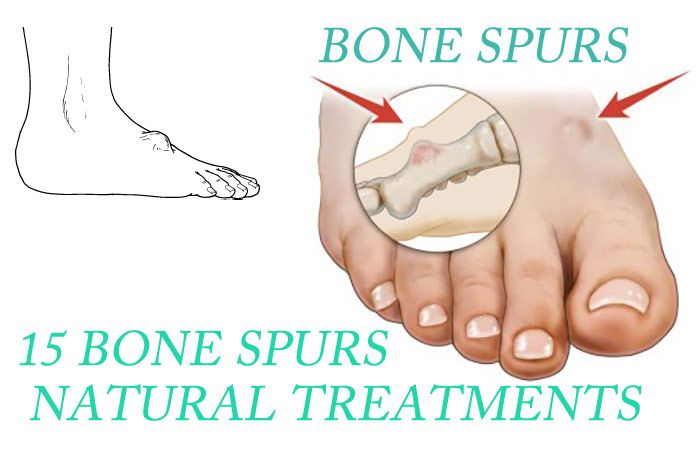
As the body tries to repair cartilage, it creates new bone material. These new bony growths are osteophytes.
Ankylosing spondylitis also may cause bone spurs. This rare arthritis causes spinal inflammation. Over time, ankylosing spondylitis fuses, or connects, the small bones in the spine (vertebrae). The body responds by forming spinal osteophytes.
What are symptoms of bone spurs?
Some people have bone spurs and don’t even know it. Spurs start to create symptoms when they:
- Put pressure on nearby nerves.
- Restrict movement.
- Rub against other bones or tissues.
When that happens, you may feel some:
- Knobby or bumpy areas, especially in the fingers or toes.
- Numbness and weakness, especially in the legs if the spine has spurs.
- Pain near the affected joint, like heel pain.
- Reduced range of motion (how far the joint moves).
- Stiffness.
- Tendinitis (swelling of a nearby tendon).

- Tendon tears (like a rotator cuff tear in the shoulder).
Diagnosis and Tests
How are bone spurs diagnosed?
Without symptoms, you may accidentally discover a bone spur during an X-ray or other test for a different condition.
If you report pain, stiffness and loss of motion to your healthcare provider, he or she will:
- Ask you to describe your symptoms.
- Ask about your medical history and family’s medical history.
- Ask you to rate your discomfort.
- Perform a physical examination.
- Test your joint’s range of motion and strength.
- Order imaging tests, like X-rays to look for arthritis and spurs or CT scans or MRIs to identify damaged ligaments or tendons.
Management and Treatment
When should I talk to my healthcare provider?
If you have bone spurs without symptoms, you don’t need treatment. Tell your healthcare provider if you develop joint pain, stiffness, limited motion or numbness.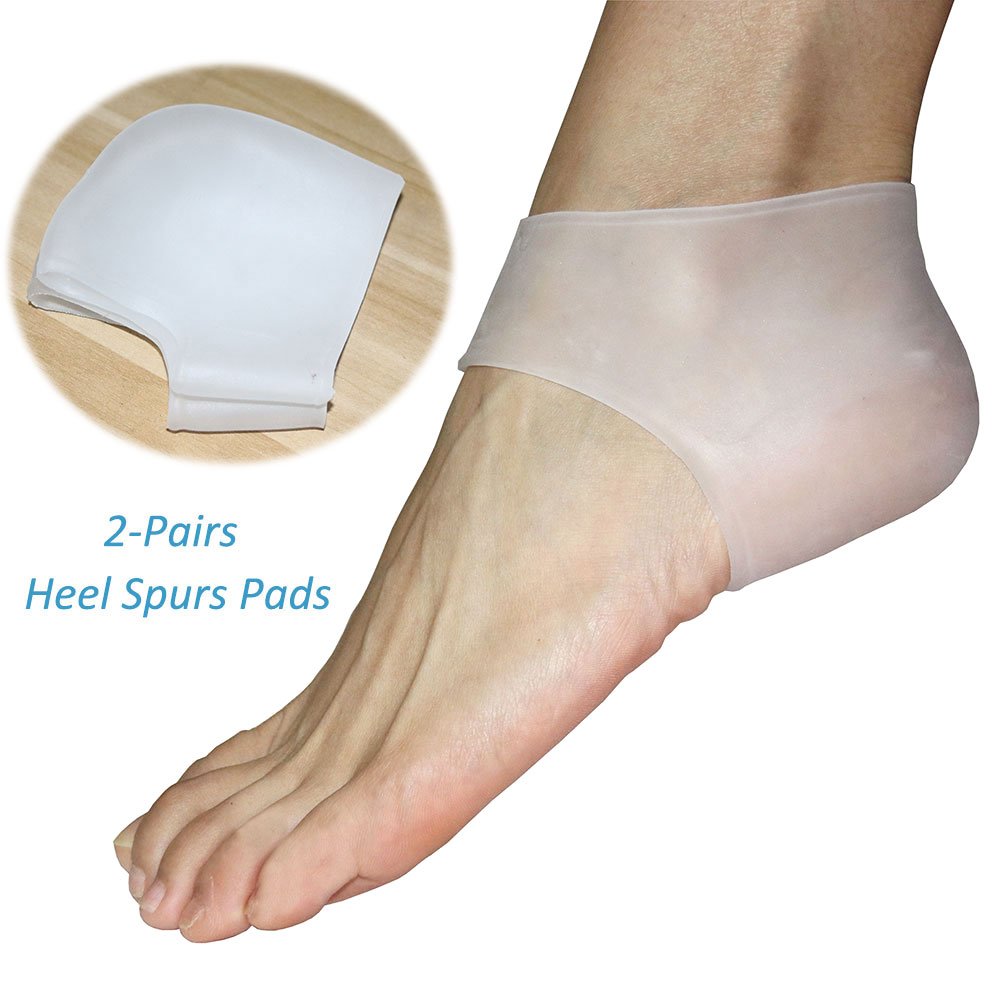
How are bone spurs treated?
Some home remedies and lifestyle changes help ease osteophyte symptoms:
- Ice to reduce swelling.
- Over-the-counter pain relievers, such as acetaminophen or NSAIDS like ibuprofen.
- Rest.
- Supportive shoes or shoe inserts.
- Weight loss to decrease joint and bone stress.
If those methods aren’t enough, your healthcare provider can prescribe:
- Physical therapy: Exercises and stretches can reduce pain, improve range of motion and strengthen muscles around joints.
- Prescription pain medications: If over-the-counter pain medicines don’t provide relief, your healthcare provider may prescribe a stronger option or cortisone shot.
- Surgery: If symptoms continue after a year of treatment, surgery can remove the bone spurs.
Prevention
How can I reduce my risk of bone spurs?
There is no certain way to prevent bone spurs.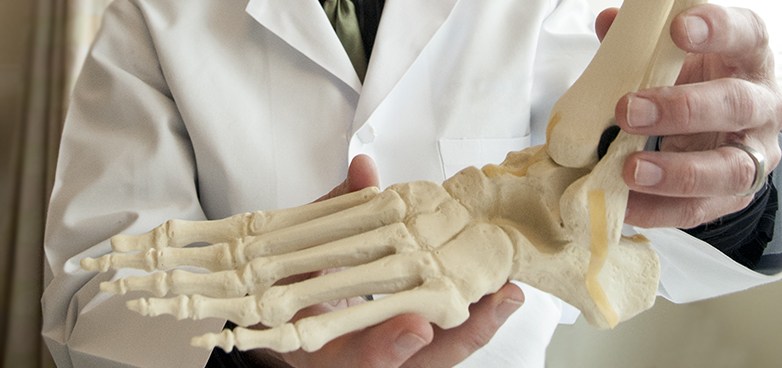 But you can reduce your chance of developing them by following a healthy lifestyle:
But you can reduce your chance of developing them by following a healthy lifestyle:
- Be physically fit.
- Eat a balanced, nutritious diet.
- Maintain a healthy weight to reduce extra stress on bones and joints.
- Maintain good posture and ergonomics (proper positioning at your desk).
- Prevent joint injuries by stretching and using safe exercise techniques. Don’t overdo it.
- Wear well-fitting, supportive shoes.
Outlook / Prognosis
How long do bone spurs last?
Bone spurs don’t go away unless you have surgery to remove them.
Do bone spurs grow back?
Although bone spurs don’t usually grow back after surgery, more may develop elsewhere in your body.
Living With
What can I do for pain and stiffness from bone spurs?
You can relieve pain and stiffness from bone spurs with rest, ice and over-the counter-medications. Properly fitting shoes and weight loss also reduce joint stress.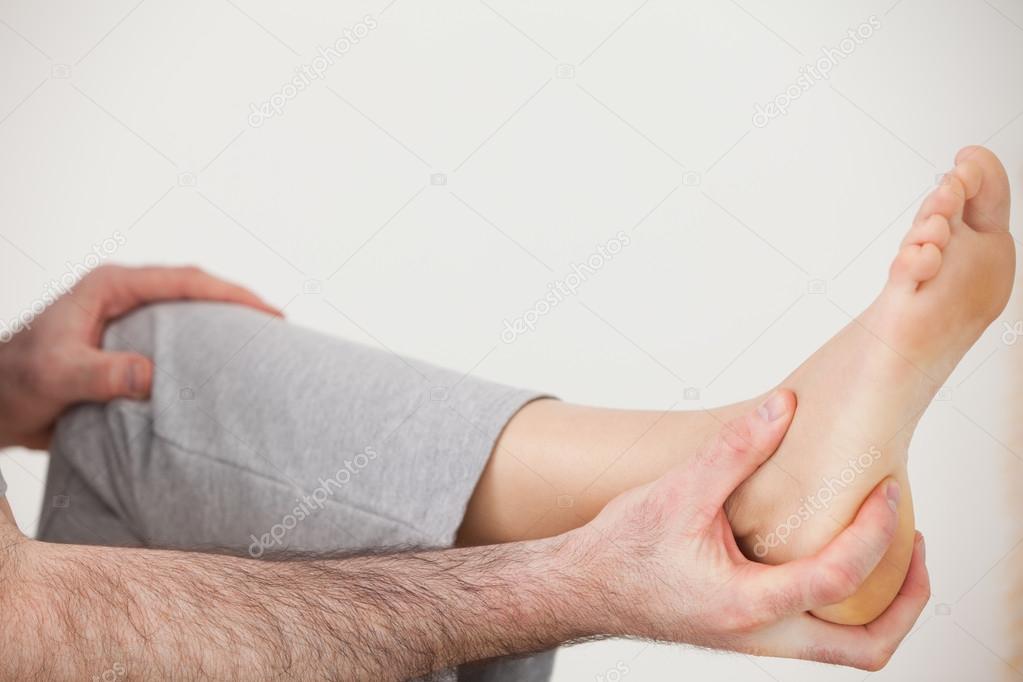 If symptoms become severe or unmanageable, call your healthcare provider.
If symptoms become severe or unmanageable, call your healthcare provider.
Should I avoid activity?
Even with bone spurs, try to stay active and healthy. Avoid activities and movements that hurt. Choose low-impact activities, like walking instead of running.
When you exercise, take steps to minimize joint damage: Make sure you have good footwear, concentrate on proper techniques, and always warm up and stretch.
A note from Cleveland Clinic
Bone spurs may cause no symptoms at all or may drastically affect your day-to-day life. Home remedies and lifestyle choices can help you delay or ease symptoms. If you can’t control your pain or other symptoms on your own, ask your healthcare provider about additional strategies.
Osteoarthritis: Symptoms and Treatment | The Hand Society
The Diagnosis of Osteoarthritis
When diagnosing osteoarthritis, your doctor will ask you about your hands and other joints. Explain how your symptoms affect what you do.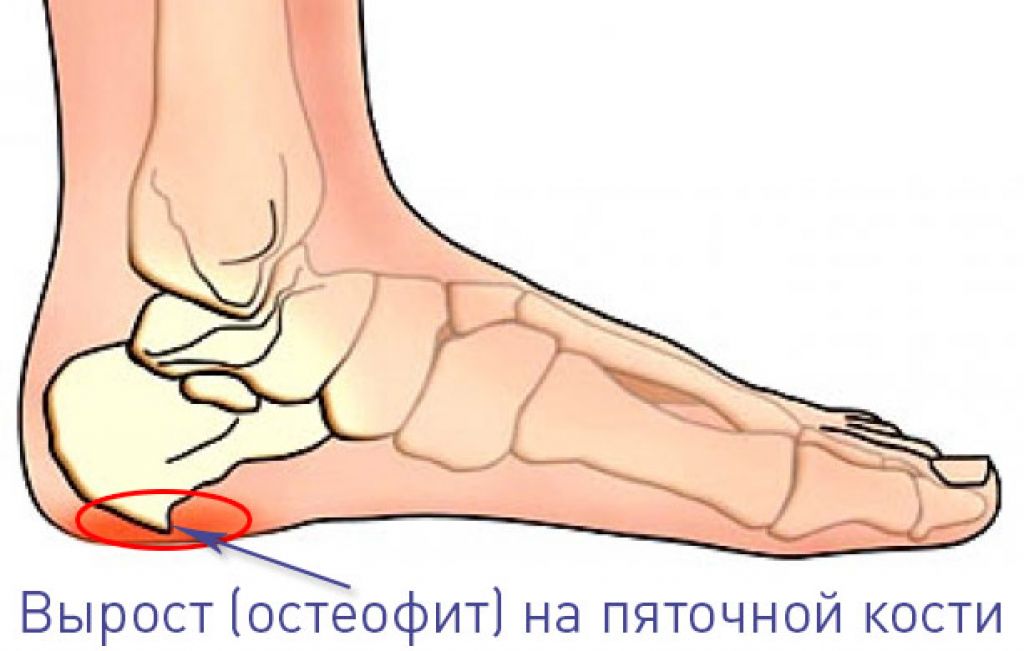 Your doctor will check how your hands look and function. X-rays of joints with osteoarthritis can show loss of normal joint space, “bone spurs,” or other changes.
Your doctor will check how your hands look and function. X-rays of joints with osteoarthritis can show loss of normal joint space, “bone spurs,” or other changes.
How to Treat Osteoarthritis
The goals in treating osteoarthritis are to relieve pain and restore function. Brief rest — either by changing activities or wearing a splint — can help. Soft, snug sleeves can help support a joint when rigid splints are too restrictive. Heat (for example, paraffin wax and warm compresses) can soothe the joints and help keep them mobile. It is important to keep as much finger motion and function as possible. Hand therapists can teach joint protection exercises and activity modification to help protect joints. Anti-inflammatory medication or a steroid injection into the joint can decrease pain, but neither cures osteoarthritis.
Surgery is considered when the non-surgical options above have not helped. In most cases, you will tell your doctor when you are ready for surgery. The goal is to restore as much function as possible and to minimize your pain. One type of surgery is joint fusion. The worn cartilage is removed and the bones on each side of the joint are fused together, which means that the joint will not move but it will not hurt. Another choice is joint reconstruction, where the rough joint surface is removed and either replaced with your own soft tissue or with an implant. The type of surgery depends on the joint(s) involved, your anatomy, and your activities. Your hand surgeon can help you decide which type of surgery is the best for you.
One type of surgery is joint fusion. The worn cartilage is removed and the bones on each side of the joint are fused together, which means that the joint will not move but it will not hurt. Another choice is joint reconstruction, where the rough joint surface is removed and either replaced with your own soft tissue or with an implant. The type of surgery depends on the joint(s) involved, your anatomy, and your activities. Your hand surgeon can help you decide which type of surgery is the best for you.
© 2012 American Society for Surgery of the Hand
This content is written, edited and updated by hand surgeon members of the American Society for Surgery of the Hand.Find a hand surgeon near you.
3 Ways To Treat Bone Spurs in the Shoulder
Bone spurs (also known as “osteophytes”) formation on the joints is often a result of arthritis due to aging and one of the most common areas a bone spur develops is under the acromion of the shoulder.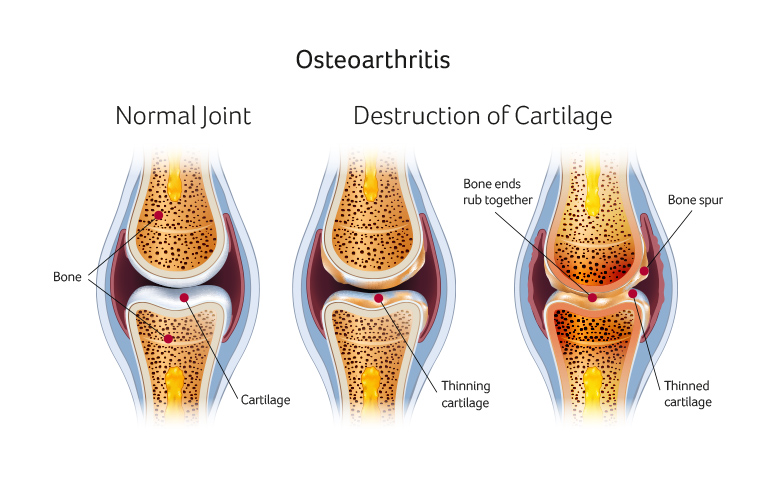 Also, those whose jobs or sports require repetitive overhead movement are at risk for this condition. The bone spurs form as the tissue between the shoulder joint deteriorates which causes the bones of the shoulder to begin to rub together.
Also, those whose jobs or sports require repetitive overhead movement are at risk for this condition. The bone spurs form as the tissue between the shoulder joint deteriorates which causes the bones of the shoulder to begin to rub together.
The tendons that comprise the shoulder and allow it to move in every direction pass through a narrow canal. A bone spur in this area is often problematic and painful because it narrows the space within the shoulder joint and irritates the rotator cuff tendons. When pinched by a bone spur, the rotator cuff tendons become frayed and irritated which can result in pain, loss of mobility and muscle spasms.
Typically, there are three ways to treat this condition:
- Activity modification—specifically related to overhead movements—helps relieve symptoms. Over time, patients learn what movements trigger symptoms and are then able to modify activity to avoid those movements. While these activities are being avoided, the tendons and ligaments of the shoulder can become less irritated and potentially heal the condition.

- Non–surgical treatments can effectively treat patients with mild symptoms. Common treatments include physical therapy, anti-inflammatory medications and therapeutic steroid injections.
- Surgical treatments are necessary when non-surgical options fail to provide relief. Surgery involves the use of arthroscopic instruments to trim or remove the bone spur and open the joint space. If the rotator cuff tendons are torn, they may also be repaired during the same procedure. In almost all cases, patients are able to return home the same day as their procedure and recovery takes only a few short weeks.
What to do if you think you have this condition?
The first step is consulting an Orthopedic Surgeon so that they can perform detailed physical exam to determine which areas of the shoulder is affected by the bone spur. Typically, an X-Ray or MRI will show exactly where the bone spur is located.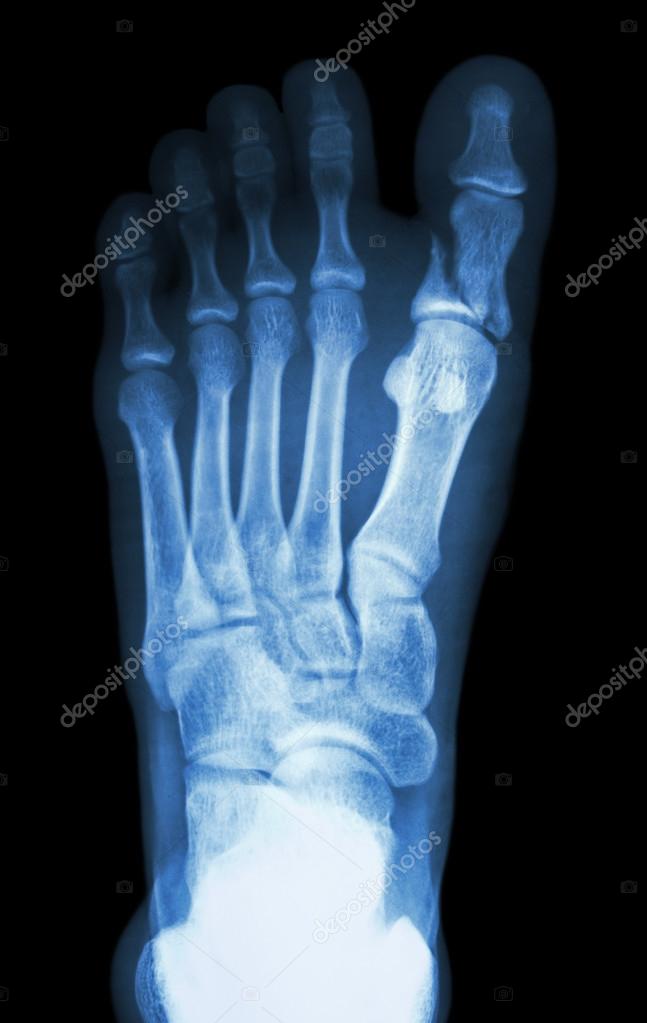 Based on the location or severity of the injury, the Orthopedic Surgeon can create a treatment plan based on your individual goals and lifestyle.
Based on the location or severity of the injury, the Orthopedic Surgeon can create a treatment plan based on your individual goals and lifestyle.
High Mountain Orthopedics specializes in bone, joint and muscle injuries, including shoulder injuries. Dr. William Matarese and Dr. Tony Wanich have over 25 years of combined experienced treating orthopedic and sports injuries. Our practice uses a multi-disciplinary approach that includes physical therapy and activity modification. If surgery is necessary, our team utilizes the latest advancements in Minimally Invasive and Arthroscopic procedures to expedite the healing process. If you are suffering from a bone, joint or muscle injury – contact our offices today! We have locations in Wayne, Paramus and Englewood, NJ.
What Is It And How To Treat It
Home > Conditions > Osteoarthritis of the Hand: What Is It And How To Treat It
What is Osteoarthritis of the Hand?
Osteoarthritis of the hand is a common condition causing pain, stiffness, and swelling in the joints of the hands and the fingers.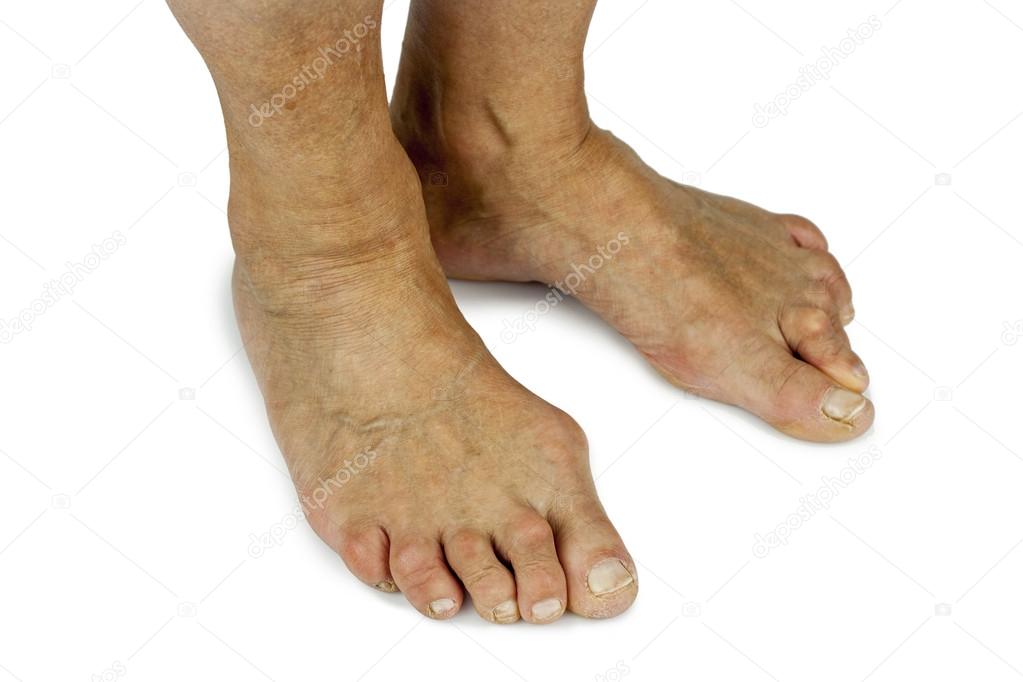 The hand is comprised of five metacarpal bones and 14 phalangeal, or finger, bones. These long, skinny bones have cartilage on their tips where they articulate with the next bone. This articular cartilage acts as a cushion and an anchor to cells which secrete synovial fluid. Synovial fluid acts as a lubricant to facilitate movement of the bones at the joint. In osteoarthritis of the hand, the articular cartilage is damaged, and has little ability to repair itself. With continued use of the joint, wear and tear of the damaged cartilage occurs. This may progress until all of the cartilage in the joint has worn away and the two bony surfaces of the joint are touching directly without a protective cartilage cushion. In an attempt to heal itself, the joint secretes more synovial fluid leading to swelling, and bone spurs may form.
The hand is comprised of five metacarpal bones and 14 phalangeal, or finger, bones. These long, skinny bones have cartilage on their tips where they articulate with the next bone. This articular cartilage acts as a cushion and an anchor to cells which secrete synovial fluid. Synovial fluid acts as a lubricant to facilitate movement of the bones at the joint. In osteoarthritis of the hand, the articular cartilage is damaged, and has little ability to repair itself. With continued use of the joint, wear and tear of the damaged cartilage occurs. This may progress until all of the cartilage in the joint has worn away and the two bony surfaces of the joint are touching directly without a protective cartilage cushion. In an attempt to heal itself, the joint secretes more synovial fluid leading to swelling, and bone spurs may form.
What causes Osteoarthritis of the Hand?
Advanced age is a known risk factor for osteoarthritis of the hand. Occupations or hobbies which involve repeated wear and tear on the finger joints is another cause. Younger people may be affected due to a traumatic injury to the hand or a congenital abnormality of the joint.
Younger people may be affected due to a traumatic injury to the hand or a congenital abnormality of the joint.
What are the symptoms of Osteoarthritis of the Hand?
Pain is the most common presenting symptom of osteoarthritis of the hand. It usually progresses in intensity over time. In the beginning the pain may occur only with activity and be relieved by rest. Late in the disease, the pain may be a constant, dull ache.
Stiffness of the joint is also a common complaint. This is due to the excess synovial fluid that builds up in the joint. Stiffness is usually worse in the morning or after a long period of inactivity.
The joints of the hand may become widened, enlarged, and deformed. Bony lumps, called nodes, may grow on the finger joints. Heberden’s nodes occur on the joint closest to the fingertip, and Bouchard’s nodes can be found on the middle finger joint. Digital Mucoid Cysts, which are a subtype of Ganglion Cyst, may occur on the joint closest to the fingertip as well.
How is Osteoarthritis of the Hand Diagnosed?
A thorough history and physical examination are essential to the diagnosis of osteoarthritis of the hand. As mentioned above, pain, stiffness, and deformities of the joint may be elicited in the physical exam. Blood tests will be used to rule out other forms of arthritis in the hands such as rheumatoid arthritis, gout, and septic arthritis. Rarely, needle aspiration of the fluid of in the joint may be performed to rule out other causes of arthritis.
Imaging studies will be performed to examine the joint itself. Plain X rays can show bone spurs, loss of cartilage, and damage to the bones. Often, the severity of a patient’s symptoms and the findings on the X ray may not correlate. MRI can then be used to assess early changes of osteoarthritis that may not show up on a traditional X ray.
How is Osteoarthritis of the Hand Treated?
Osteoarthritis of the hand can be treated non-surgically or surgically depending on the severity of symptoms and disability caused by the illness.
Non-Surgical
For mild to moderate cases, pain control can be achieved through oral medications such as acetaminophen or NSAIDs like ibuprofen. Exercise or physical therapy may be prescribed to maintain joint range of motion. In some cases, intra-articular injection of steroid medications, like Celestone, may be helpful. An Occupational Therapist may be consulted to teach necessary lifestyle modifications.
Surgical
If the pain of osteoarthritis in an isolated finger joint becomes severe and debilitating, surgery may be needed. In a procedure called Finger Joint Fusion the finger is placed in a permanently extended position to prevent pain. With Finger Joint Fusion, the bone tips are surgically filed and shaped, allowing them to directly fit together, like two pieces of a puzzle. A surgical pin or screw is used to hold the two bones in place during the healing process. As bone is a dynamic structure, it will resorb and rebuild, naturally fusing the joint together over a period of six to eight weeks. During this time the finger is splinted to prevent motion. The splint is removed once it is confirmed that fusion is complete.
During this time the finger is splinted to prevent motion. The splint is removed once it is confirmed that fusion is complete.
How can Dr. Knight help you with arthritis of the hand?
Dr. Knight has extensive experience in the treatment of arthritis of the hand. He will first confirm the diagnosis then provide conservative treatment to rapidly relieve or reduce your symptoms. In severe cases where you have pain with activities of daily living or pain at rest unrelieved with conservative care, surgery may be necessary. Based on your lifestyle and functional demands he will look at various options with you.
Dr. Knight is one of the premier hand surgeons in Dallas. We invite you to visit him at our Southlake office or Dallas office today.
Osteoarthritis of the Hand Fact Sheet
| How do people get arthritis in their hands? | Arthritis of the hand can be caused by age, repetitive motion, and often trauma in younger sufferers. |
| Can I treat my hand arthritis at home? | The most effective home treatments for Arhthritis of the hand are physical therapy, rest, and icing |
| What medications are effective at combating or treating arthritis of the hand? | Medications used to treat arthritis include acetaminophen, NSAIDs, and steroid injections |
| Is hand arthritis something I’m stuck with for life? | If it is not treated effectively and steps taken to avoid getting worse, yes, it can be. |
| What are some treatments for hand arthritis? | Conservative medications, or surgery consisting of joint fusion |
| Can food affect Arthritis of the Hand? | Yes, certain food increase the risk of inflammation, which can exacerbate arthritis |
Frequently asked Questions:
How do I know if I am developing Arthritis of the Hand?
If you’re developing arthritis, pain is going to be the first and most noticeable sign. Along with pain, your joints will begin to stiffen and swell as a result of excess synovial fluid building up within the joints themselves. At later stages, nodules and lumps of bone may begin to appear at the joint sites, but this will all be preceded by the pain and swelling, so you will know long before the nodules appear.
Along with pain, your joints will begin to stiffen and swell as a result of excess synovial fluid building up within the joints themselves. At later stages, nodules and lumps of bone may begin to appear at the joint sites, but this will all be preceded by the pain and swelling, so you will know long before the nodules appear.
Can what I eat affect the development of Arthritis?
While the relationship between food and particular conditions is often no more than an old wives’ tale, in the case of arthritis there are actual clinical relationships between the foods we eat and the development of arthritis. Arthritis is an inflammatory condition, and one of the most common effects that some foods can have on the body is to cause inflammation. When you ingest foods that cause this, it can exacerbate the symptoms of already underlying arthritis. High fat foods, such as fried and processed fast food, refined carbohydrates and refined sugar can lead to tissue inflammation and heighten the pain and other symptoms of arthritis, and are best avoided.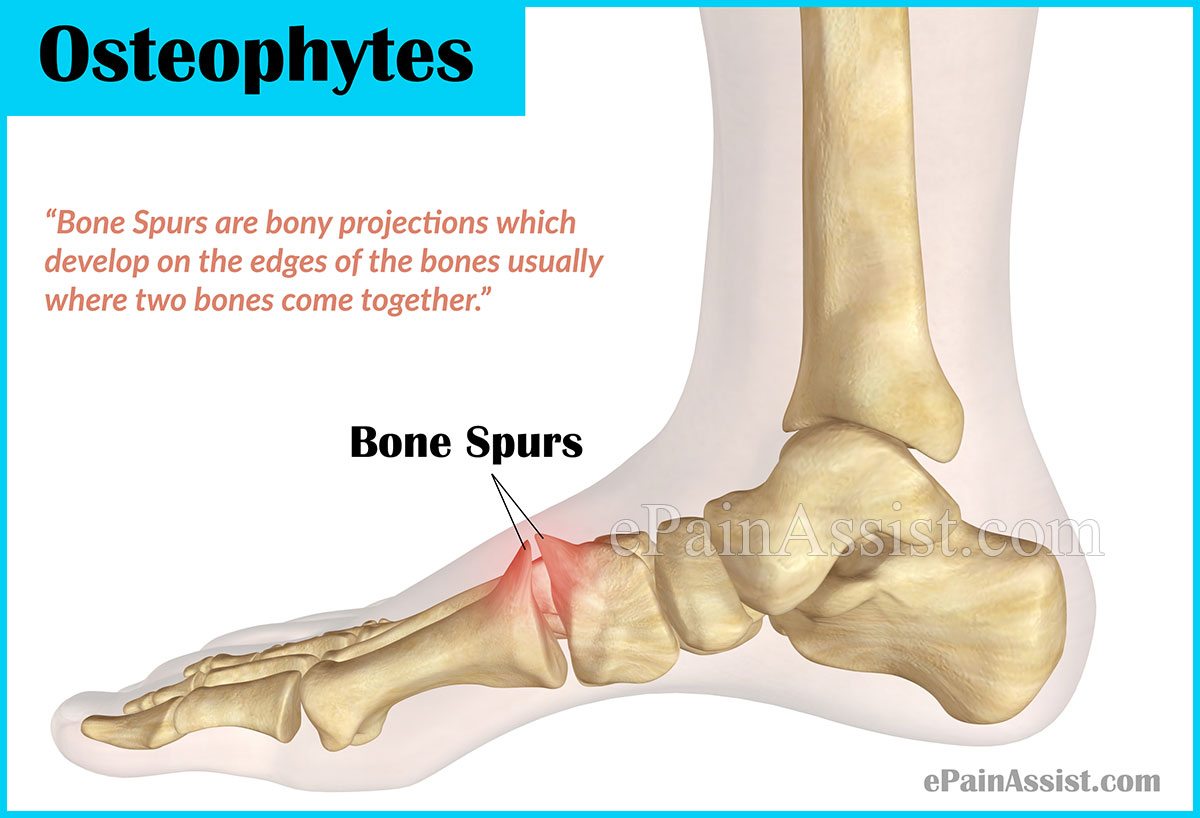
Do I have to have surgery to fix Arthritis?
Surgery is not explicitly necessary as the sole method of remedying arthritis of the hand, but once the condition passes a certain stage of inflammation, there is little else that can be done to reverse the swelling, pain, and debilitation. Once a patient begins to develop the bony nodules discussed above, surgery is the only real option, because without it the fingers will become essentially unusable, and the bone will calcify into place, so it is important to deal with the symptoms of arthritis as soon as possible to avoid these complications.
How can I keep my arthritis from getting worse?
Unfortunately, osteoarthritis is not an illness that can be treated by ignoring it, and even if you take your diet into control, regularly exercise and massage your affected hands, medical treatment is going to be necessary to address it sooner or later.
Videos
youtube.com/embed/KLDb1budAVI?modestbranding=1&autohide=1&rel=0&showinfo=0″ frameborder=”0″ allowfullscreen=”allowfullscreen”/>
Animated Videos
Surgical Video
Note: The following videos contain graphic images.
Book an Appointment or Ask a Question
Disclaimer
HandAndWristInstitute.com does not offer medical advice. The information presented here is offered for informational purposes only. Read Disclaimer
Dr. John Knight
Dr. Knight is a renowned hand, wrist and upper extremity surgeon with over 25 years of experience. Dr. Knight is a Board Certified Orthopedic Surgeon and Fellowship trained. Dr Knight has appeared on CNN, The Doctors TV, Good Morning America, The Wall Street Journal, The Washington Post, Forbes, The Huffington Post, Entrepreneur, Oxygen network and more.
Dr Knight has appeared on CNN, The Doctors TV, Good Morning America, The Wall Street Journal, The Washington Post, Forbes, The Huffington Post, Entrepreneur, Oxygen network and more.
What Are the Treatments for Bone Spurs in Hands?
According to the University of Washington School of Medicine, degenerative joint disease in the finger joints can result in bony growths, known as bone spurs 3. This type of bone spur usually forms near the joints of the fingers due to the wearing out of the joint cartilage, also known as osteoarthritis. Symptoms of bones spurs in the hand include swelling, stiffness, pain and reduced range of motion.
Is This an Emergency?
If you are experiencing serious medical symptoms, seek emergency treatment immediately.
Exercise and Physical Therapy
Bones spurs in the hand are almost always accompanied by stiffness, reduced range of motion and loss of strength. Physical therapy, occupational therapy or a home exercise program, emphasizing range of motion and grip strength exercises, will help the patient maximize the function of the hand.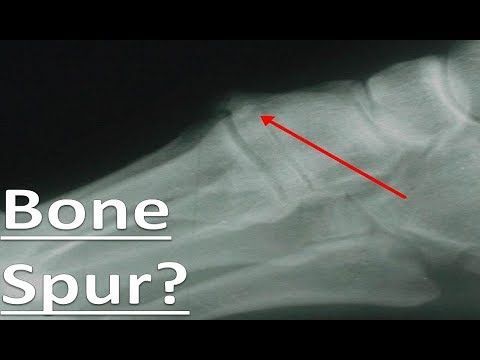 The patient may find that using hot water baths will decrease pain and stiffness and make exercising easier and more tolerable. Exercises will focus on actively moving the fingers against gentle resistance, such as gripping a soft ball, or moving the fingers in a bowl of uncooked rice. Exercising is most effective in the early stages of bone spur formation.
The patient may find that using hot water baths will decrease pain and stiffness and make exercising easier and more tolerable. Exercises will focus on actively moving the fingers against gentle resistance, such as gripping a soft ball, or moving the fingers in a bowl of uncooked rice. Exercising is most effective in the early stages of bone spur formation.
- Bones spurs in the hand are almost always accompanied by stiffness, reduced range of motion and loss of strength.
- Physical therapy, occupational therapy or a home exercise program, emphasizing range of motion and grip strength exercises, will help the patient maximize the function of the hand.
Medications and Injections
Symptoms of Rheumatoid Arthritis in the Hands and Fingers
The physician may prescribe anti-inflammatory medications to the patient with osteoarthritis and bones spurs in the hands. If oral anti-inflammatory medications do not produce the desired results, the physician may next inject the affected joints with steroids. Anti-inflammatory medications do not address the cause of bone spurs and will generally only provide temporary relief. According to the American Academy of Orthopaedic Surgeons, steroid injections may provide relief for several months, but cannot be repeated indefinitely 1.
Anti-inflammatory medications do not address the cause of bone spurs and will generally only provide temporary relief. According to the American Academy of Orthopaedic Surgeons, steroid injections may provide relief for several months, but cannot be repeated indefinitely 1.
- The physician may prescribe anti-inflammatory medications to the patient with osteoarthritis and bones spurs in the hands.
- If oral anti-inflammatory medications do not produce the desired results, the physician may next inject the affected joints with steroids.
Surgery
When conservative, non-invasive treatments fail to provide relief, surgery is sometimes an option. Bone spurs that have formed outside of joints can often be easily removed. More commonly, bone spurs in the hand, involve the joints and a more extensive surgery must be performed. Surgery may include reconstructing the existing joint, fusing the joint completely, or replacement with an artificial joint. The surgeon will discuss which options are viable for the patient’s specific case. Each surgery will require a period of rehabilitation, from two to 12 weeks.
The surgeon will discuss which options are viable for the patient’s specific case. Each surgery will require a period of rehabilitation, from two to 12 weeks.
- When conservative, non-invasive treatments fail to provide relief, surgery is sometimes an option.
- More commonly, bone spurs in the hand, involve the joints and a more extensive surgery must be performed.
Treatment Options for Bone Spurs
If spinal bone spurs are determined to be the likely cause of back pain and other symptoms, there are a wide range of possible treatment options.
Lumbar Osteophytes (Bone Spurs) Video
Save
Learn how bone spurs can compress nerves in the lower back and cause neurological symptoms and/or pain. Watch Lumbar Osteophytes (Bone Spurs) Video
Nonsurgical Treatment for Bone Spurs
Most patients with mild or moderate nerve compression and irritation from bone spurs can manage their symptoms effectively without surgery. The goal of nonsurgical treatment is to stop the cycle of inflammation and pain.
The goal of nonsurgical treatment is to stop the cycle of inflammation and pain.
Nonsurgical treatments include:
Medications
Medication, such as nonsteroidal anti-inflammatory medications (NSAIDs) and muscle relaxants may be recommended. Because of the risk of side effects, long-term use of medications should be approached with caution.
See Osteoarthritis Medications
advertisement
Short periods of rest
Activity may flare up inflammation in the joints. Short periods of rest can give inflammation time to recede.
Physical therapy and exercise
Physical therapy, exercise, and manipulation (performed by chiropractors [DC], osteopaths [DO], and physical therapists [PT]), may alleviate back pain associated with bone spurs. These rehabilitation therapies attempt to restore flexibility and strength to the spine, improve posture and decrease nerve root compression.
See Exercise for Osteoarthritis
Spinal manipulation
If the pain and inflammation caused by bone spurs is related to abnormal alignment and movement patterns in the spine, a spinal adjustment may help relieve symptoms.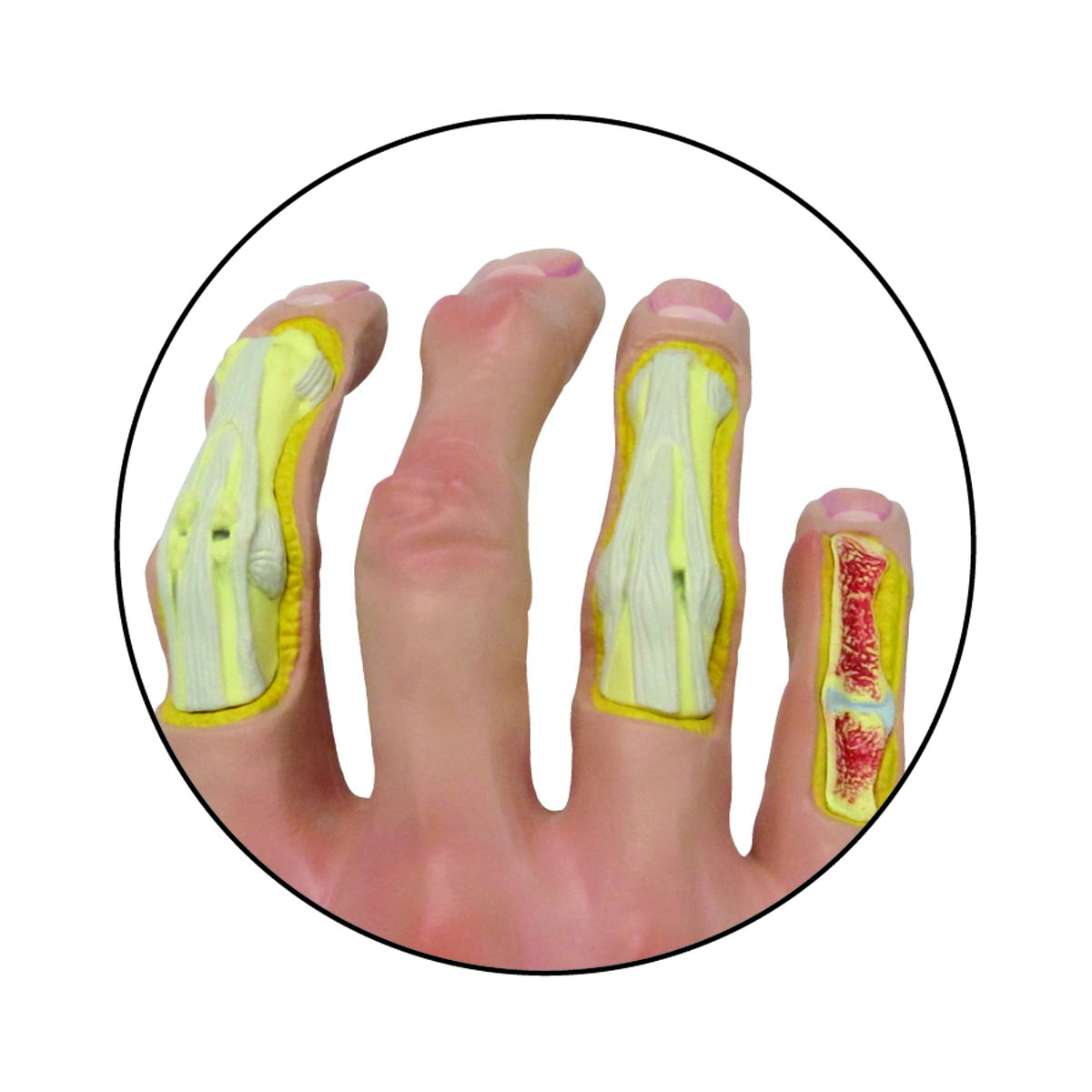 Chiropractors, osteopaths and physical therapists use their hands or small instruments to apply pressure over the skin of vertebrae and manipulate the spine. The goal is to increase range of motion, reduce nerve irritability, and improve function. Spinal manipulation is not appropriate for everyone. A careful medical history, physical examination, and discussion of the risks and benefits of manipulation should occur prior to this type of treatment.
Chiropractors, osteopaths and physical therapists use their hands or small instruments to apply pressure over the skin of vertebrae and manipulate the spine. The goal is to increase range of motion, reduce nerve irritability, and improve function. Spinal manipulation is not appropriate for everyone. A careful medical history, physical examination, and discussion of the risks and benefits of manipulation should occur prior to this type of treatment.
See Understanding Spinal Manipulation
Weight loss
Losing excess weight can take pressure off the spine, reducing friction between the vertebrae’s facet joints and decreasing the likelihood of pain. Achieving an appropriate weight is especially effective in taking pressure off the lower back.
See Weight Loss for Back Pain Relief
In This Article:
Injections
Fluoroscopically guided, contrast enhanced spinal injection procedures that target the presumptive source of spinal pain can help decease pain and inflammation. In addition, depending on whether local anesthetic is used as part of the injection into the spine, the procedure can help an astute clinician identify or narrow down the source of a patient’s pain.
In addition, depending on whether local anesthetic is used as part of the injection into the spine, the procedure can help an astute clinician identify or narrow down the source of a patient’s pain.
See Facet Joint Injection Procedure
A spinal injection may not completely relieve a patient’s pain, but may provide enough relief to allow progression of rehabilitation. Patients should avoid receiving more than 3 injections into any one joint over a short period of time. In addition, if the first injection provides no relief, there is no evidence that further injections into the same structure will provide a better result.
See Cervical, Thoracic and Lumbar Facet Joint Injections
If these nonsurgical treatments fail to treat pain due to bone spurs, a patient may be referred to a spinal surgeon.
Read more about Non-Surgical Osteoarthritis Treatments
Spine Surgery for Bone Spurs
Spine surgery may be recommended if nerve or spinal cord compression is causing unremitting pain and/or loss of motor/sensory function.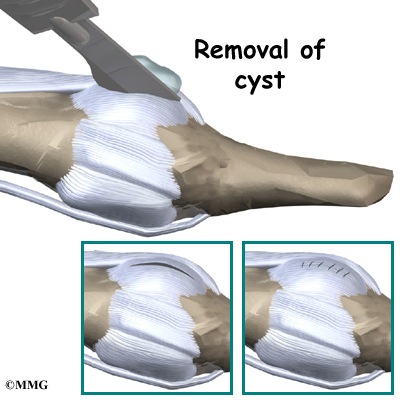 Surgery for bone spurs involves removing tissue to relieve pressure on the spinal cord and/or nerves roots. For example:
Surgery for bone spurs involves removing tissue to relieve pressure on the spinal cord and/or nerves roots. For example:
Bone spur removal
During this surgery special tools are used to remove bone spurs from the vertebra(e).
Since it is possible for the bone spurs to grow back, and because there may be more than just bone spurs contributing to symptoms, a surgeon may suggest another surgical procedure, such as a laminectomy or foraminotomy.
Laminectomy
A laminectomy is designed to relieve pressure on the spinal cord caused by central spinal stenosis. During surgery, a portion of the affected vertebra, called the lamina and spinous process at the back of the spine, is removed. With this small piece of the spinal canal wall removed, there is more room for the spinal cord.
Watch Lumbar Laminectomy Surgery Video
Foraminotomy
A foraminotomy is designed to relieve pressure on a nerve root. Every nerve root passes through an intervertebral foramen, a bony, hollow archway between 2 adjacent vertebrae. During a foraminotomy, bone tissue around the foramen is cut away or shaved down, enlarging the foramen space. This procedure creates more space for the nerve root, relieving nerve root compression.
advertisement
Whether or not a surgery will reduce or eliminate back or neck pain and other symptoms depends on the extent of the spinal degeneration; the patient’s overall health; and the patient’s commitment to rehabilitation; and other factors. The surgeon’s expertise and experience also play a role.
See Outpatient Posterior Cervical Foraminotomy/Discectomy
Patients considering surgery are advised to have maximized nonsurgical care options first and then, if surgery is considered, to have a detailed discussion with a spinal surgeon about risks and benefits.
Read more about Surgery for Osteoarthritis
90,000 Bone spur. Bone spur causes. When to treat a bone spur. !
1.What is a bone spur?
Bone spur or osteophyte is a growth that forms on top of normal bone. The specific name of this phenomenon misleads many people who mistakenly believe that a bone spur is something sharp, but it is soft to the touch, quite a common bone neoplasm.
Most often osteophytes are located on the lower or posterior surface of the calcaneus, less often they are found on the shoulders, elbows, hips or knees. As a rule, their presence is not accompanied by painful phenomena, but when in contact with soft tissues, bones and tendons, they can cause excruciating and severe pain. A huge role is assigned to localization of bone spur . If the bone spor is located, for example, on the olecranon, then its owner will not feel discomfort and other painful manifestations, which means that there is no need for its treatment.But if a bone spur has formed on the heel bone, which is used when a person walks, then over time it will cause more and more strong and prolonged painful sensations.
Another common localization of the bone spur, or osteophyte, is the shoulder area . The complex structure of the shoulder joint determines its multifunctionality, the ability to move the shoulder and arm in different directions. Over time, the tendons, muscles, ligaments and bones that make up the shoulder joint begin to wear out.This process primarily affects the tendons that attach the muscles to the upper arm.
During movements, the tendons can come into contact with the bones, provoking the appearance of bone spurs, followed by inflammation, the appearance of pain in the affected area. This pathology is typical for the elderly and athletes, as well as for those who, due to their professional activities, are forced to keep their hands above their heads.
A must for your reference!
Help with treatment and hospitalization!
2.What triggers the formation of bone spurs?
Bone spur, or osteophyte, is formed in response to rubbing, pressure or other mechanical impact on a certain part of the body for an extended period of time. The bone spur embodies the body’s attempt to heal itself by building up bone tissue.
Visit our
Traumatology and Orthopedics page
3.Causes of bone spur
Wear of articular cartilage. In some cases, the appearance of bone spurs in a person is part of the aging of the body. Over time, the cartilage that covers the ends of the bones inside the joints wears out and wears out, as a result of which it can no longer perform its main function – to reduce friction between the joints. Loss of elasticity, hardening of cartilage and their increased susceptibility to damage indicate the development of osteoarthritis .The consequence of the progression of this disease is the formation of bone spurs.
Excessive pressure . Bone neoplasms appear on the feet most often due to the pressure of the ligaments, which is observed during dancing, running for a long time, as well as due to uncomfortable shoes or overweight. An unbalanced load on the foot can result in inflammation of the long ligament located at its base. This process in medicine is called plantar fasciitis .It is characterized by reddening of the heel, its inflammation, followed by the formation of a bone growth, known as heel spur . As noted above, it develops mainly in women who prefer high-heeled shoes, as well as in athletes and dancers.
Bone spur – a growth that forms on top of the bone under the influence of external factors: friction, pressure and strong physical exertion. It is a natural, physiological phenomenon in some cases manifested only by external defects, and sometimes accompanied by severe and excruciating pain and requiring urgent treatment!
About our clinic
m.Chistye Prudy
Medintercom Page!
90,000 Low cost shock wave therapy in Saratov
According to the WHO, about 70% of the world’s population suffers from diseases of the musculoskeletal system. One of the most advanced joint treatment methods is SHOCK WAVE THERAPY (SWT).
Shock wave therapy is a modern and effective high-tech treatment method used in orthopedics, traumatology, neurology, urology and cosmetology.
The basis of the SWT method is a targeted impulse effect of a high-energy sound wave on the affected area. The positive effect is achieved by reducing pain, destroying microcrystals of salts and loosening fibrous areas, improving blood flow and metabolic processes in tissues, stimulating regeneration. UHT is widely used in the complex treatment of various diseases of the musculoskeletal system for arthrosis, arthritis, and various diseases of the spine.
SWT has been successfully used as an alternative to surgery and other invasive methods of treatment when conservative methods have proved ineffective.
Joints are an important part of the musculoskeletal system; the ability of a person to walk, run, move, do something depends on their condition. Unfortunately, the joints of the arms and legs are susceptible to many diseases, not only in old age, but also at a fairly young age. If you feel pain or discomfort, difficulty in movement, you should immediately take action, because joint diseases do not heal on their own.
INDICATIONS FOR USE OF UHT:
- deforming arthrosis of large joints
- osteochondrosis of the spine
- pain syndrome with flat feet
- Plantar fasciitis (heel spur)
- rehabilitation treatment after injuries, fractures, dislocations
- humeral-scapular periarthropathy
- shoulder and neck pain
- Osteochondropathy of the tibia (Schlatter’s disease)
- tennis elbow syndrome
- golfer’s hand syndrome, etc.
CONTRAINDICATIONS TO UHT:
- Cancer
- acute infectious diseases
- increased fragility of blood vessels
- blood diseases
- pregnancy
- implanted pacemaker.
Orthopedic device for UHT Dornier Aries.
The new device allows to provide fast and lasting pain relief, improve blood circulation, reduce tissue edema, gradually destroy bone growths, increase muscle elasticity, improve the mobility of ligaments and tendons, and increase resistance to physical stress and injury.The unique technology “intelligent focus” creates a so-called “therapeutic channel” (70 mm. In depth and 10 mm. effectively diagnose and treat various pathologies.
The Dornier Aries device allows you to achieve, in some cases, a positive result after the first procedure.The device has a programmable menu that allows you to select individual, optimal therapy parameters, as well as to store a patient database and procedures protocols.
How many procedures are required?
Treatment with shock wave therapy requires a systematic approach, depending on the nature and localization of the disease process, which should be treated with shock wave therapy, the number of sessions may vary. Usually, for diseases of the musculoskeletal system, 5-6 SWT procedures are performed, each of which is performed once a week.Your doctor should decide how to treat the disease with the UHT method. Always remember and ask him about contraindications and do not forget to inform the doctor about your chronic health problems.
Consultation and treatment is carried out by a traumatologist-orthopedist of the highest category Sergey Nikolaevich Kireev, Candidate of Medical Sciences, Associate Professor of the Department of Traumatology and Orthopedics.
Details and registration by phone +7 (8452) 911-112.
Vitamin D for the treatment of chronic painful conditions in adults
Chronic pain is pain of moderate to severe intensity lasting three months or more.It can have various causes, but most chronic pain is caused by problematic conditions of the musculoskeletal system (musculoskeletal system), such as arthritis or muscle pain. Chronic pain usually affects older people more than younger people. Chronic pain is a disabling (disabling) condition that has a serious negative impact on quality of life.
Vitamin D has many functions in the body. It is formed in the skin by exposure to sunlight and can also be obtained from food.Vitamin D deficiency has been shown to cause a number of pathological conditions, including chronic pain. In addition, the association (association) of pain as diverse as headache, abdominal pain, knee pain, back pain, season of year and latitude (residence) provides indirect support for the role of vitamin D. Possibility of a link between low vitamin D levels and chronic pain has generated interest because, if this were true, vitamin D would be an inexpensive and relatively safe treatment.
We searched scientific databases for studies comparing vitamin D supplements to placebo (dummy) or active medications in the treatment of chronic pain conditions in adults. The evidence is current to February 2015.
There is little evidence to support this link, but it is not of high quality and cannot be reliable. This update of the review sought to find high-quality evidence from randomized controlled trials (studies in which participants are randomly assigned to receive one of several treatment options) for vitamin D for the treatment of chronic pain conditions.
We did not find a consistent pattern that vitamin D treatment was better than placebo for any chronic painful condition. But the studies had methodological flaws (low quality of evidence).
More research is needed to determine if vitamin D is useful in treating pain in any particular chronic pain condition. Such studies should investigate whether any effect is limited to individuals who have a vitamin D deficiency (deficiency).You should also examine how much vitamin D is required and how long it should be taken for its beneficial effects to appear.
Shoulder-scapular pain syndrome – GUZ “Tula Regional Clinical Hospital No. 2 named after L.N. Tolstoy “
Pain contracture of the shoulder joint arising from trauma, disease, and sometimes for no apparent reason, since the time of S. Duplay (1872), it is customary to call periarthritis of the shoulder scapula. This condition is characterized by severe pain in the shoulder joint, both in daily activity and at rest.It is often complicated by a protracted course of up to several months, and sometimes even years. Pain, limitation of movement, decreased muscle strength and endurance severely disrupt the patient’s ability to work for a long period of time at work and at home.
The shoulder joint is a rather complex motor part of the human musculoskeletal system. The special structure of the articular surfaces of the bones that form the shoulder joint, the surrounding tissues and other joints involved in the movement of the shoulder girdle causes high mobility in this joint, but often leads to insufficient stability.All parts involved in the movement of the joint work harmoniously like musicians in a symphony orchestra. It is not difficult to imagine that if one musician plays out of time, it will drastically disrupt the work of the entire orchestra, the same can be applied to the shoulder joint.
Reasons
For many people, the cause of shoulder pain is bursitis . Bursitis is an inflammation of the bursa of the shoulder joint. Another source of pain can be inflammation of muscle tendons.This disease is called tendonitis . Many reasons can lead to the development of inflammation in the joint capsule or tendons. One of these reasons is impingement – syndrome. This syndrome occurs due to friction of the tendons of the rotator cuff muscles against the process of the scapula – acromion , which forms the upper part of the shoulder joint.
Usually, there is sufficient space between the acromion and the muscles that move the shoulder joint so that the tendons slide freely under the acromion when the shoulder joint moves.However, whenever you raise your arm, there is a slight compression of the tendons and bursa between the head of the humerus and the acromion. This phenomenon is called impingement . The phenomenon of impingement occurs to one degree or another when raising a hand in any healthy person. The development of clinically pronounced impingement is facilitated by daily work with raised hands (plasterers), with constant throwing movements (shot pushers). Often, impingement syndrome occurs clinically when the tendons of the rotator cuff are irritated or damaged.Any conditions leading to a narrowing of the gap between the acromion and the rotator cuff tendons contribute to the appearance of impingement syndrome. A common cause of this narrowing is bone spurs – spine-like outgrowths emanating from the acromioclavicular joint . The acromioclavicular joint is the joint between the scapula and the clavicle, located just above the bursa and rotator cuff. In some cases, this gap is narrowed due to the hypertrophied acromion.In the future, the tendons of the rotator cuff are rubbed, and all this leads to a further increase in pain and even tendon ruptures.
Symptoms
In the early stages of impingement syndrome, the main complaint of patients is a diffuse dull pain in the shoulder. The pain increases when the arm is lifted up. Many patients note that the pain prevents them from falling asleep, at night the pain is pronounced, especially if you lie on the side of the affected shoulder joint.The pathognomonic symptom of impingement syndrome is the occurrence of acute pain in the patient when trying to reach the back pocket of his trousers or unbutton the bra. In later stages, the pain increases, and joint stiffness may appear. Sometimes in the joint there is a clicking sound at the time of lowering the hand. Weakness and difficulty raising the arm up may indicate a ruptured rotator cuff tendon.
Diagnosis
Diagnosis of bursitis or tendinitis due to impingement syndrome is based on an analysis of the symptoms of the disease and physical examination.The doctor will ask you questions about the nature of your work, since impingement syndrome is very often an occupational disease. X-rays of the shoulder joint may be done to look for abnormal or hypertrophied acromion or bone spurs near the acromioclavicular joint. If a rotator cuff rupture is suspected on examination, a magnetic resonance imaging is performed . Magnetic resonance imaging is a special technique for imaging slices of bones and soft tissue using magnetic waves.This is a completely safe and painless research method. In some cases, it is not clear what causes the pain in the shoulder: damage and inflammation of the structures of the shoulder joint or irritation of the nerve roots in cervical osteochondrosis. The introduction of a local anesthetic (for example, novocaine) into the joint capsule helps to differentiate the source of pain. If the pain goes away immediately after the injection, it is most likely caused by bursitis or tendinitis. In pain caused by irritation of the nerve roots, this effect is not observed.
Treatment
Conservative treatment
At the first stage of treatment, as a rule, conservative therapy is prescribed. It includes the use of non-steroidal anti-inflammatory drugs (Voltaren, Ksefokam, etc.), a protective regime for the sore arm, the use of physiotherapy, exercise therapy. In the case of severe pain syndrome, topical blockade can be prescribed in the area of the articular bag with a glucocorticoid suspension (depot-medrol, diprospan). These drugs are very effective in relieving pain and reducing swelling and inflammation.The effect of the administration of glucocorticoid hormones lasts for several months. To increase the mobility in the shoulder joint in the acute period, “light” physical exercises for the hand are prescribed. As the painful phenomena subside, strength exercises are connected to the complex of physiotherapy exercises aimed at increasing the strength of the muscles of the shoulder girdle. The duration of conservative therapy is on average 4-6 weeks. During this time, in most patients, pain in the shoulder disappears and its function is restored.
Surgical treatment
If, after a course of conservative therapy, the patient is concerned about shoulder pain, the doctor may recommend an operation – arthroscopy of the shoulder joint. The aim of the operation is to accurately diagnose injuries inside the shoulder joint, as well as to remove the inflamed subacromial bursa, and to increase the gap between the acromion and the rotator cuff. The surgeon removes bone spines, which can narrow the gap and damage the rotator cuff tendons.Removal of part of the acromion is also usually performed in order to widen the gap. An arthroscope is a surgical instrument connected to a video camera that is inserted into the joint through a miniature incision. The contents of the joint are displayed on the monitor screen. Thus, the surgeon can identify the area of the acromion that narrows the gap and needs to be removed. Through another small incision, special instruments are introduced, with which part of the acromion is removed.
After the operation, there is a significant decrease in pain in the shoulder joint or their complete disappearance.For the purpose of further treatment and recovery, a course of physiotherapeutic treatment, physical therapy classes aimed at restoring the range of motion in the joint and restoring the strength of the limb is carried out.
Write a comment
- Required fields are marked with * .
90,000 Treatment Heel “spur” – Orthopedics Ruslan Sergienko
A heel spur is the result of plantar fasciitis, the main symptom of which is heel pain that occurs or worsens with exertion.In most cases, pain syndrome is caused by inflammatory-degenerative changes in the plantar (plantar) fascia.
Plantar fascia is a rigid tendon plate woven from a huge amount of microfibers that attaches to the calcaneus and the heads of the metatarsal bones, creating a kind of protective cover for the plantar surface of the foot.
As can be seen from the figure, the plantar fascia is stretched like a bowstring between the bones, the so-called arch of the foot.Imagine that with each step this peculiar bowstring is pulled, holding this arch, not allowing the bones of the foot to “part”.
Constant load of body weight, overload when performing hard work, changes in posture due to back diseases lead to the appearance of microdamages at the points of attachment of the plantar fascia to the bones. As can be seen from the figure, the place of attachment of the “bowstring” to the metatarsal bones is divided into five points, while on the heel there is only one point of attachment. The load is 5 times more on the heel, therefore, the disease begins precisely from the heel.
There is a microdamage (tear or rupture) of one of the many fine fibers of the plantar fascia. The body reacts in a standard way – inflammation develops. Inflammation leads to the formation of edema, abnormal germination of microvessels and small nerve branches into the damaged fascia, and pain occurs. The pain is especially pronounced after a night’s sleep and rest, the so-called “starting pain”.
The remaining intact fibers of the plantar fascia begin to work instead of the broken ones, experiencing increased stress, and are also damaged.
Inflammation and pain progresses causing stress to be reduced. Human activity is reduced, new fibers are not damaged. The inflammatory process subsides, scars are formed at the site of the damaged fibers, and then bone growths, which are visible on the roentgenogram and have a characteristic “spur” appearance.
That is why this disease is called “heel spur”, although the “spur” itself is already the result of long-term plantar fasciitis.
Who is more likely to have a heel spur?
Heel spur mainly affects people over 40 years old, and women are more prone to this disease.The likelihood of developing heel spurs increases excess weight, problems with the spine, arthritis, flat feet, diseases of the large joints of the legs, injuries of the heel bone, gout, poor circulation of the legs. Also, a heel spur is found in athletes with prolonged loads in the heel area.
What are the symptoms of a heel spur?
The leading symptom of the heel spur (plantar fasciitis) is pain in the heel region that occurs or increases with exertion. Pain is more pronounced in the morning.In most cases, to diagnose plantar fasciitis, an analysis of the patient’s complaints, physical examination and radiography are sufficient to detect the presence of a heel spur. The absence of radiological signs of a heel spur in combination with heel pain requires a differential diagnosis with systemic inflammatory diseases (rheumatoid arthritis, Reiter’s syndrome, etc.), which can also debut with heel pain. In this case, the diagnosis of plantar fasciitis can be made with an ultrasound examination.
What is the treatment for a heel spur?
First, get rid of the congestion.
This does not mean completely abandoning any movement. This means that a painless range of motion should be performed. For example, you have noticed that it is worth standing for 2 hours, the pain increases. Try standing for 2 hours at intervals, such as 15 minutes. Or you are walking 4 kilometers and in pain. Try to walk 2 kilometers or the same 4 kilometers, but at a slow pace.Sports doctors have proven that continuing exercise in a “sparing mode” has a greater effect on the treatment outcome than giving up exercise altogether.
Stretching and strengthening.
The stretching and strengthening program plays an important role in the treatment of the disease, as it can effectively relax spasmodic muscles of the lower leg or strengthen weak muscles of the foot. Why is stretching or “stretching” effective? It relaxes the tension and reduces the risk of the string breaking. The less taut plantar fascia is not damaged as much.Do such exercises at home.
The easiest way to stretch is using a support wall: Or steps: Another effective stretching method is to use foot rests that can be used in the workplace, such as under a work desk, or in the kitchen, thus increasing the time for these “on-the-job” activities … The use of “rockers”, widely used for the prevention of salt deposition, is a type of “dynamic stretching” of the plantar fascia.For the same purpose, you can use a tennis ball or an iron can: Before getting out of bed, to reduce pain, it is useful to massage in the sole area:
or towel stretching: Strengthens the small muscles of the foot.
By performing 2 simple exercises, you can achieve a significant increase in strength in the small muscles of the foot, which will lead to unloading of the plantar fascia.
- Towel pull. The patient sits on a chair, a towel lies on the smooth floor in front of him.The patient puts his toes on the towel and, without lifting the heel off the floor, bending his toes, pulls the towel towards him.
- Raising fingers up. The patient sits on a chair, the foot is on the floor, the toes are raised up. First, the thumb is placed on the floor, and the rest remain raised. Then the thumb rises and remains in this position, and the rest are lowered and placed on the floor.
About 35% of patients achieve regression of symptoms only by stretching and strengthening the muscles.
Shoes.
Plantar fasciitis often develops after wearing uncomfortable, especially tight shoes or shoes with excessively stiff soles. People who have plantar fasciitis may find that wearing sneaker-type shoes with a soft, springy sole and an insole that wraps around the arch of the foot significantly reduces pain. This is not surprising. The cushioned sole absorbs the shock of walking, while the form-fitting insole supports the arch and transfers the load directly to the bones, bypassing the plantar fascia.
It should also be noted that over time, the properties of polymeric materials from which shoes are made change, so such shoes need to be changed in a timely manner.
Insoles.
With regard to insoles, we can say that only individually selected devices, made on modern equipment based on a foot impression, can help in the treatment of fasciitis. The insoles do not act on the fasciitis itself, but by correcting violations of the arch of the foot, for example, with flat feet. Improperly fitted insoles can worsen the patient’s condition.
Immobilizing dressings for the night.
The purpose of the immobilizing bandages is to keep the ankle in a neutral position. It has been noted that the vast majority of people sleep with outstretched socks. In this position, the attachment points of the plantar fascia to the bones converge, which causes it to shorten over time. This is what causes morning foot pain. The man spent the whole night with outstretched socks, and in the morning he gets to his feet, sharply stretching the inflamed plantar fascia.The immobilizing bandage keeps the bones from drawing together, and the plantar fascia does not contract overnight, which reduces morning pain.
The immobilizing dressing for the night can be made from plaster or polymer dressings, or purchased ready-made, from those sold in the pharmacy.
An example of an immobilizing night dressing: Of course, sleeping in a cast is not very comfortable, but studies have shown that this method is effective in 80% of patients. Night immobilizing dressings are especially effective in patients with a long period of illness (about 12 months or more).
Anti-inflammatory treatment for heel spurs.
For anti-inflammatory treatment of heel spurs, ice, non-steroidal anti-inflammatory drugs, electrophoresis and injections of hormonal agents are used.
Ice is used in the form of ice massage, ice baths or ice packs.
Ice massage: the patient takes an ice cube, places it over the painful area and performs circular movements with slight pressure for 5 to 10 minutes.
Ice bath: fill a shallow container with ice water, place only the heel in it and hold for 10 to 15 minutes. Do not lower other parts of the foot into the water to avoid hypothermia.
Ice pack: place crushed ice in a plastic bag, wrap with a towel and apply to the heel for 15 – 20 minutes. Instead of crushed ice, you can use a bag of frozen food.
Ice is applied after exercise or after work.
Non-steroidal anti-inflammatory drugs (eg diclofenac or nimesulide).
A study of the efficacy of nonsteroidal anti-inflammatory drugs in plantar fasciitis has shown conflicting results. Therefore, they are recommended to be used only in case of increased pain, given the side effects of these drugs, which include gastrointestinal bleeding, gastritis, and damage to kidney tissue.
Electrophoresis.
Electrophoresis is a physiotherapeutic procedure that uses the properties of low-voltage electrical impulses to conduct corticosteroid (hormonal) drugs deep into the tissues.Studies of the effectiveness of this method of treatment have shown that within 2 to 3 weeks after the end of the procedure, the therapeutic effect decreases.
Corticosteroid injections.
Corticosteroid injections are effective in up to 70% of patients, but they are known to rupture the plantar fascia in up to 10% of patients. It is known that the introduction of corticosteroids into any tissue leads to its death at the injection site. Therefore, this method of treatment should be used with extreme caution.
Shockwave therapy is a highly effective non-surgical method of treating a “heel spur”, approved by the analogue of the US Department of Health as the main one for this particular disease, based on the action of acoustic shock waves. Shockwave therapy has long been used to crush stones in the urinary tract. This is the so-called intracorporeal (intra-body) shock wave therapy. In contrast to devices for crushing kidney stones (lithotripters), in devices for extracorporeal (applied on the body surface) shock wave therapy, the acoustic wave is much less powerful.Its action is based on the stimulation of recovery processes in areas of chronic tendon inflammation and non-union fractures.
Shockwave therapy does not break the heel spurs as is commonly thought. It sharply enhances regeneration at the site of injury to the plantar fascia, stops long-term inflammation, thereby, on the contrary, preventing the development of the heel spur. A shock wave in orthopedics does not destroy, but restores.
The effectiveness of shock wave therapy is comparable to surgical treatment, since more than 93% of patients report a pronounced and lasting clinical effect.However, unlike surgical treatment, shock wave therapy is a painless method of treatment that does not require anesthesia or hospital stay.
Shockwave therapy is a safe method of treating a heel spur that has a complex effect and eliminates the cause of the heel spur.
Effects of Shock Wave Therapy:
- Pain and Inflammation Reduction
- Improvement of blood circulation and nutrition of damaged tissues
- destruction of calcifications, bone “growths”
- acceleration of healing of damaged tissues
- Increase in mobility in the damaged area of the body
- increasing the resistance of tendons, ligaments and muscles to physical stress and injury
Advantages of shock wave therapy:
- High clinical efficacy – up to 93% of patients have a clinical effect
- rapid onset of clinical effect – reduction of pain, edema, improvement of mobility
- persistent clinical effect of the course lasts up to 1 year
- patient safety – no complications or side effects
- convenience of treatment for the patient – a session lasts 5-10 minutes, the frequency of the procedure is once a week, 5-7 sessions are enough for a complete recovery
- Reducing the need for drugs or completely eliminating them
- Optimal replacement for surgery and injections.
It is recommended to maintain the effect of the shock wave with exercises for stretching and strengthening the muscles, anti-inflammatory treatment in the form of ice and electrophoresis, as well as modification of the exercise regime.
TRUST YOUR HEALTH CARE TO REAL PROFESSIONALS!
90,000 HOW TO TREAT BONE SPURS ON HANDS? – MEDICAL
Contents:
According to the University of Washington School of Medicine, degenerative disease of the finger joints can lead to bony growths known as bone spurs 3. This type of bone spur usually forms near the joints of the fingers due to wear and tear on the articular cartilage, also known as osteoarthritis. Symptoms of bony hand spurs include swelling, stiffness, pain, and decreased range of motion.
Is this an emergency?
If you experience severe medical symptoms, seek emergency help immediately.
Exercise and physiotherapy
Bone spurs in the hand are almost always accompanied by stiffness, reduced range of motion and loss of strength. Physical therapy, occupational therapy, or a home exercise program that emphasizes range of motion and grip strength exercises will help the patient to maximize arm function. The patient may find that using hot water baths will relieve pain and stiffness and make exercise easier and more tolerable. Exercise will focus on actively moving your fingers against light resistance, such as grabbing a soft ball or moving your fingers in a bowl of raw rice.Exercise is most effective in the early stages of bone spur formation.
- Bone spurs in the hand are almost always accompanied by stiffness, reduced range of motion and loss of strength.
- Physical therapy, occupational therapy, or a home exercise program that emphasizes range of motion and grip strength exercises will help the patient to maximize arm function.
Medicines and injections
A doctor may prescribe anti-inflammatory drugs to a patient with osteoarthritis and bone spurs on the hands.If oral anti-inflammatory drugs don’t work as desired, your doctor may inject steroids into the affected joints. Anti-inflammatory drugs do not address the cause of bone spurs and usually provide only temporary relief. According to the American Academy of Orthopedic Surgeons, steroid injections can bring relief for several months, but cannot be repeated indefinitely 1.
- A doctor may prescribe anti-inflammatory drugs to a patient with osteoarthritis and bone spurs on the hands.
- If oral anti-inflammatory drugs do not work, your doctor may inject steroids into the affected joints.
Operation
When conservative non-invasive treatments do not bring relief, surgery can sometimes be used. Bone spurs that develop outside of the joints are often easy to remove. Most often, bony spurs of the hand that affect the joints occur, therefore more extensive surgical intervention is required.Surgery may include reconstruction of an existing joint, complete fusion of the joint, or replacement with an artificial joint. The surgeon will discuss which options are appropriate for the patient’s specific case. Each operation will require a rehabilitation period of two to 12 weeks.
- Surgery can sometimes be used when conservative, non-invasive treatments do not provide relief.
- Bony spurs of the hand that affect the joints are the most common, therefore more extensive surgical intervention is required.
90,000 Heel spur. Heel spur treatment
- Relieve heel pain in 1-2 sessions
- Applying the gold standard for heel spur treatment
- We provide an individual approach to each patient
Calcaneal spur (plantar fasciitis, calcific tendonitis of the plantar ligament) – bone growth in the form of a thorn or wedge in the area of the plantar surface of the calcaneus tuberosity.Heel spur belongs to such a group of diseases as enthesopathies – diseases of attachment of tendons, ligaments, fascia to the bone, in which degenerative and inflammatory changes are observed.
Reasons for the appearance of a heel spur
The main reason for the development of a heel spur is chronic trauma to the plantar aponeurosis as a result of various reasons. So, in patients suffering from flat feet, a heel spur is very often detected. As a result of the development of a chronic inflammatory process in the plantar fascia, calcium salts are deposited.The main starting processes are:
- Excessive leg load
- overweight
- uncomfortable shoes
- Frequent microtrauma of this area in athletes
- flat feet
- Consequences of injuries to the heel region
Symptoms
The main complaint that patients present with a heel spur is a burning pain when resting on the heel, the feeling of a “nail” in the heel is the most common symptom of a heel spur.Lameness often develops. A heel spur significantly affects the patient’s quality of life, especially if it can be seen on both legs at once. In this case, if both feet hurt, the patient simply cannot move normally, the only option is to move on tiptoes. The main danger of the heel spur lies precisely in the pronounced pain and limitation of the patient’s motor activity against this background.
Diagnostics
The diagnosis of a heel spur is made on the basis of a doctor’s examination and x-rays.Initially, it is subtle and rounded, but it can still cause severe pain. Subsequently, this thorn (osteophyte) grows and can reach 1-2 cm in size, taking the form of a thorn or a bird’s beak.
Treatment
Treatment of a heel spur is conservative in most cases. It should be noted that, according to foreign authors, surgical methods of treatment have proven their low efficiency. Medical and physiotherapy treatment of the heel spur is aimed at relieving inflammation of the tissues around the calcaneal tuberosity and increasing the elasticity of the ligaments.In this case, even bone growth will not cause pain when walking. Doctors of the Bone Clinic will select an individual treatment program for each patient.
It is worth noting that for a long time, the treatment of such a group of diseases as enthesopathy, namely the heel spur belongs to it, was quite problematic. With the advent of the modern method of extracorporeal shock wave therapy (ESWT), spur treatment is no longer a problem! ESWT is now the gold standard in the treatment of enthesopathies worldwide.It has been proven that ESWT is superior to surgery in terms of its effectiveness, while being safe and painless. Such unique equipment is available only in one medical center of our republic – “Bone Clinic”.
Benefits of extracorporeal shock wave therapy for heel spur treatment
- The method has proven its high efficiency literally from the very first sessions, often already after 1 procedure, when pain in the sole and heel area decreased in our patients.
- a full course of treatment (3-5 procedures), in addition to relieving pain, improves blood circulation in the affected area, restores joint mobility, in a word, destroys the heel spur, while other methods can only reduce pain and provide temporary relief.


 It is important to note that bone spurs may return over time as they are a common symptom of arthritis, which is still present and can progress even if a bone spur is removed.
It is important to note that bone spurs may return over time as they are a common symptom of arthritis, which is still present and can progress even if a bone spur is removed.
